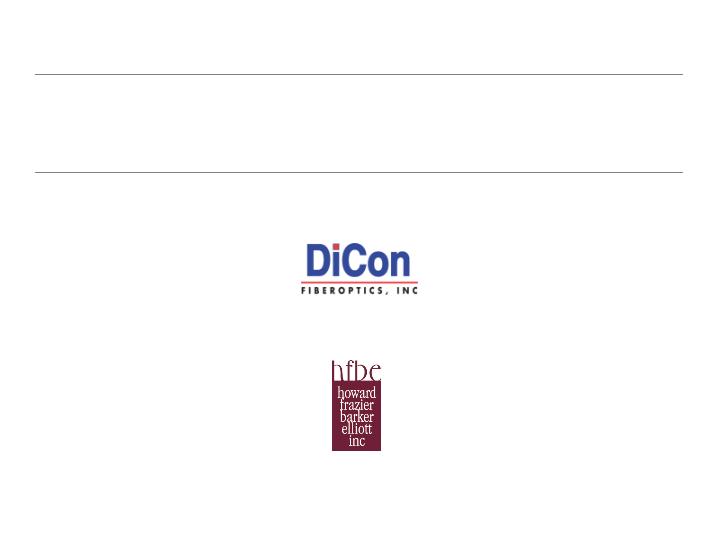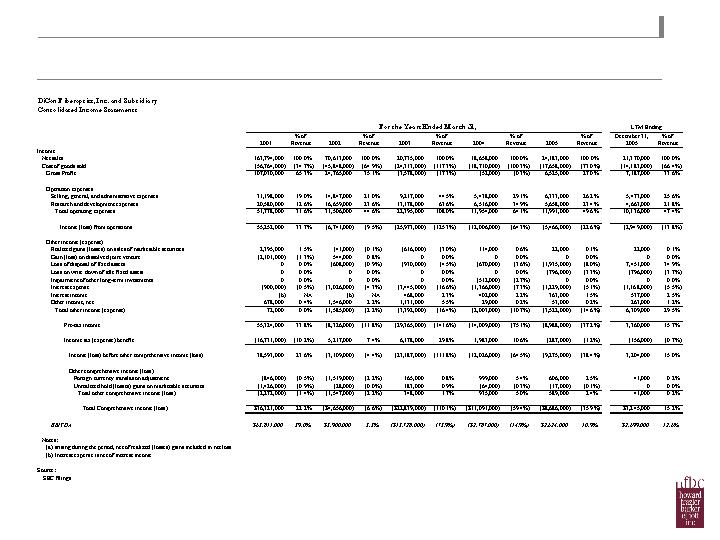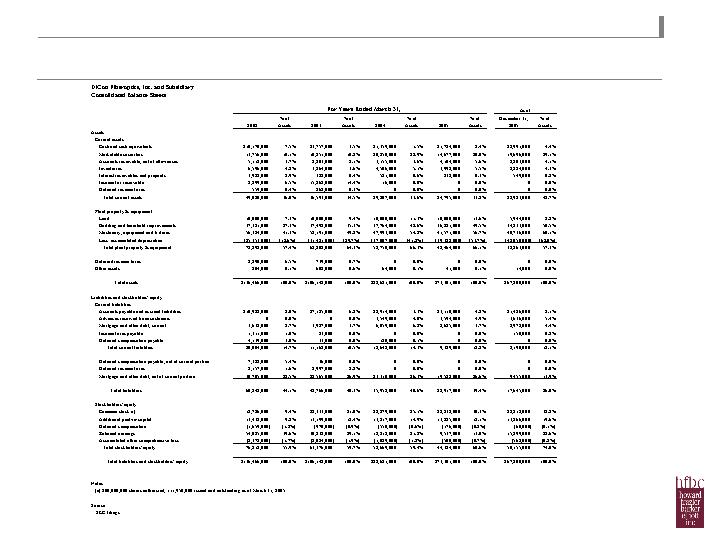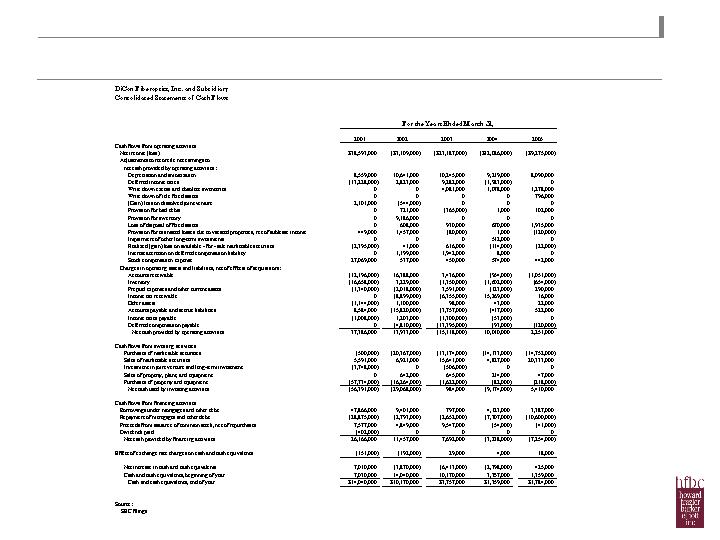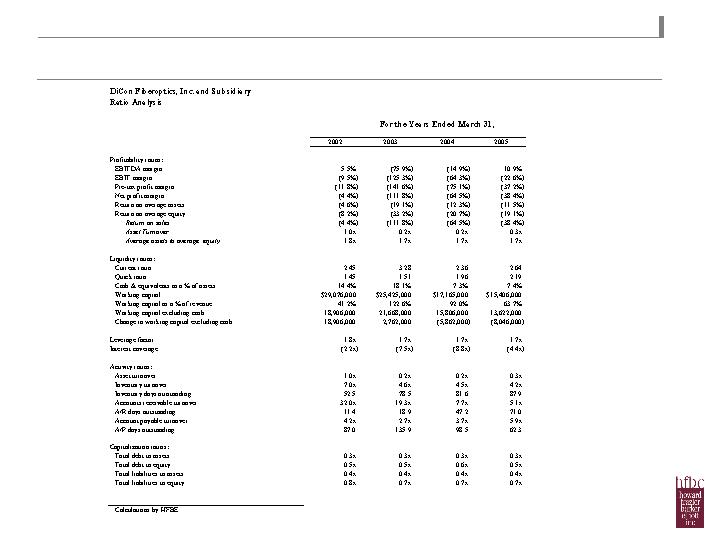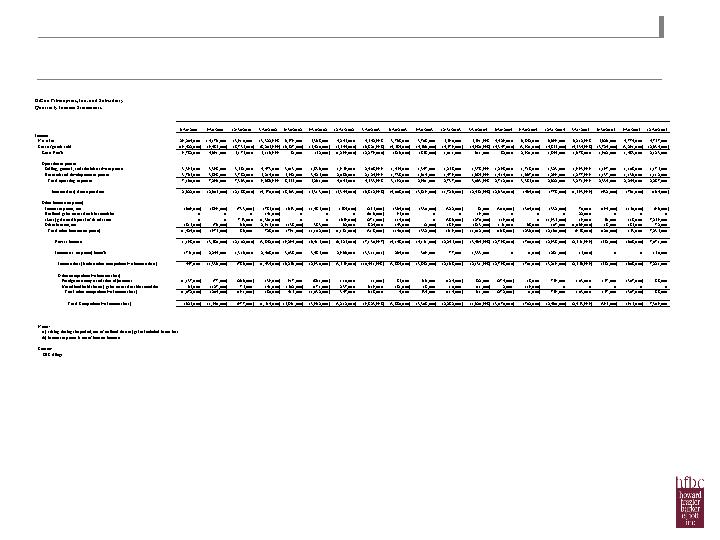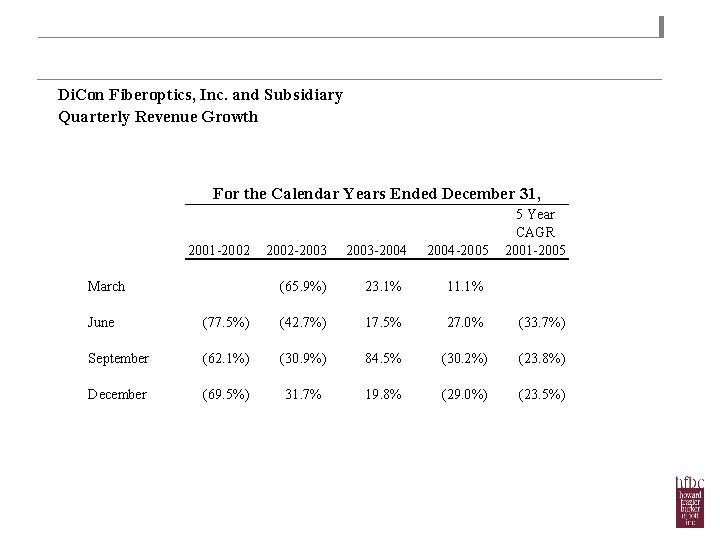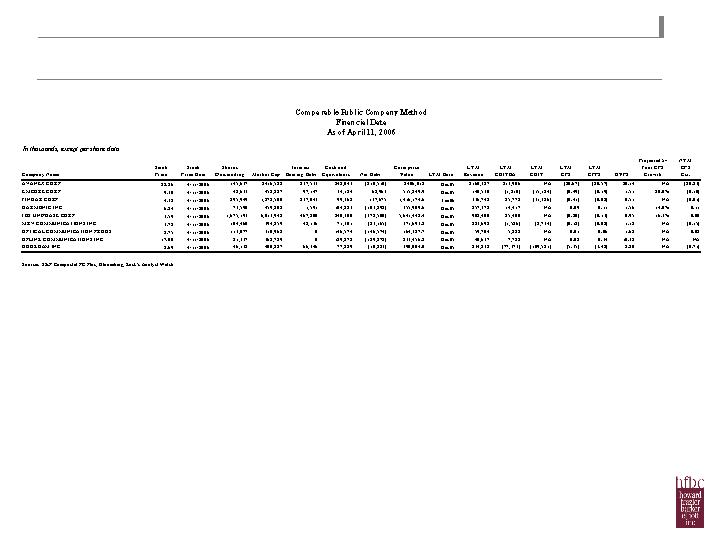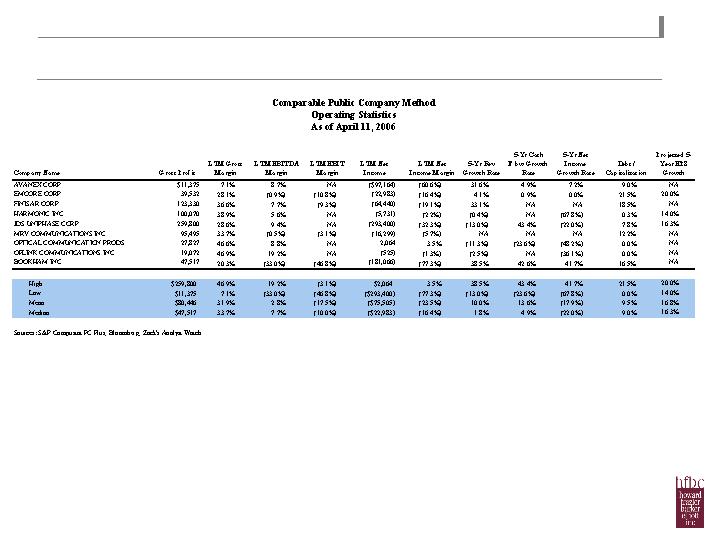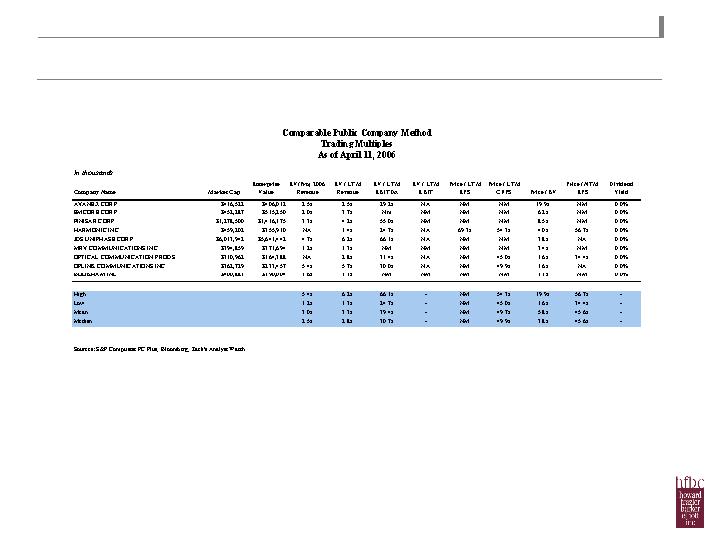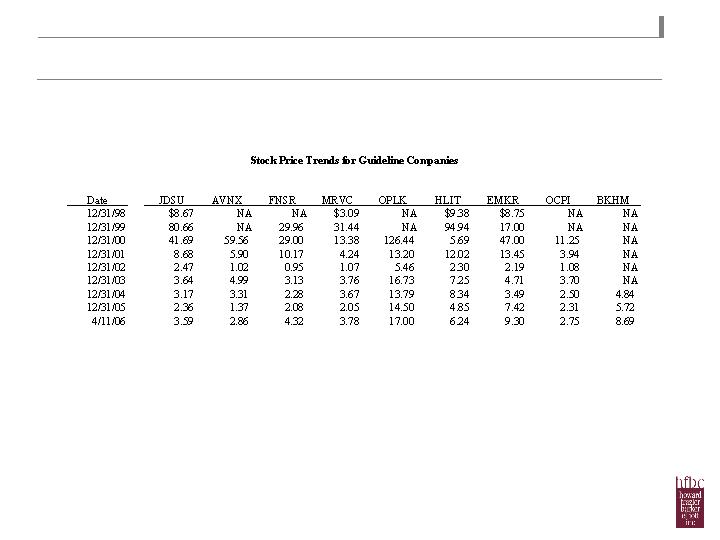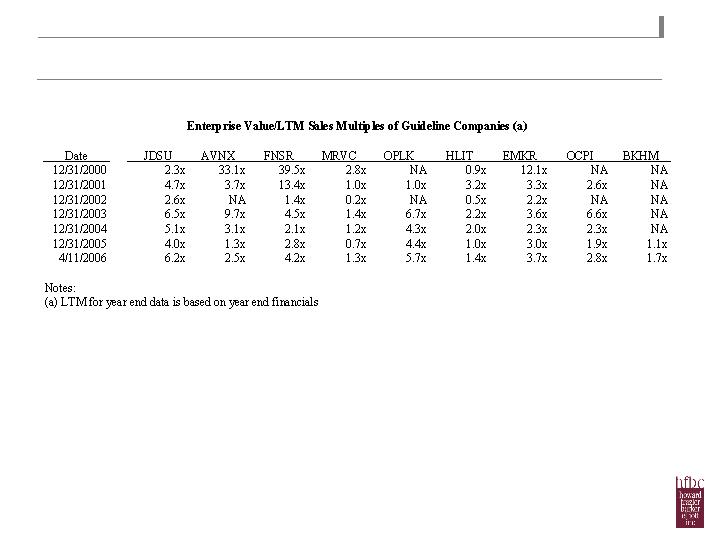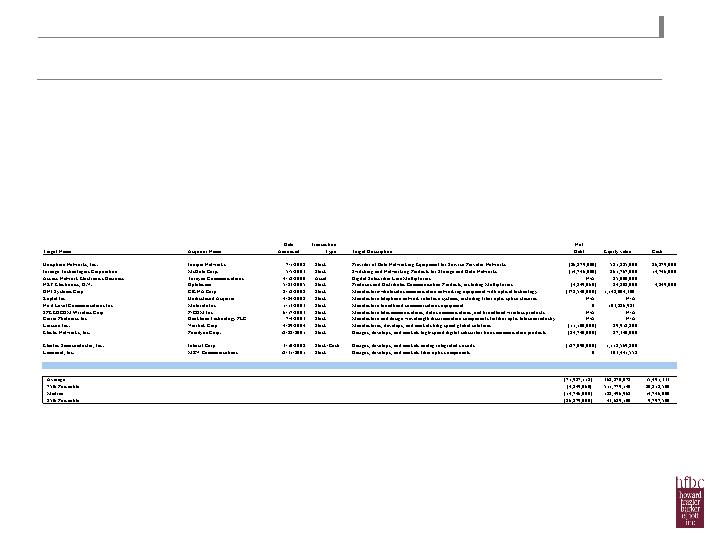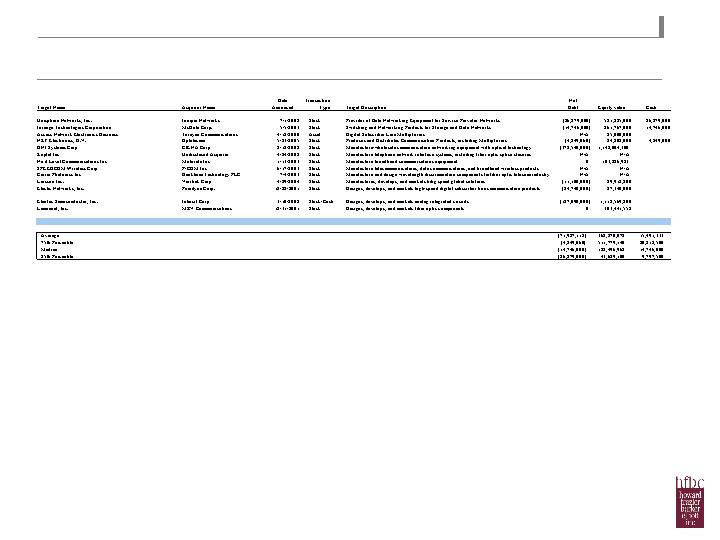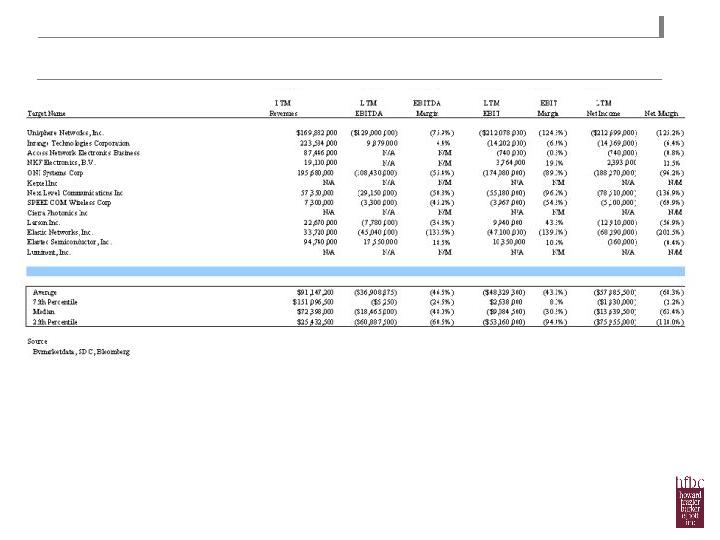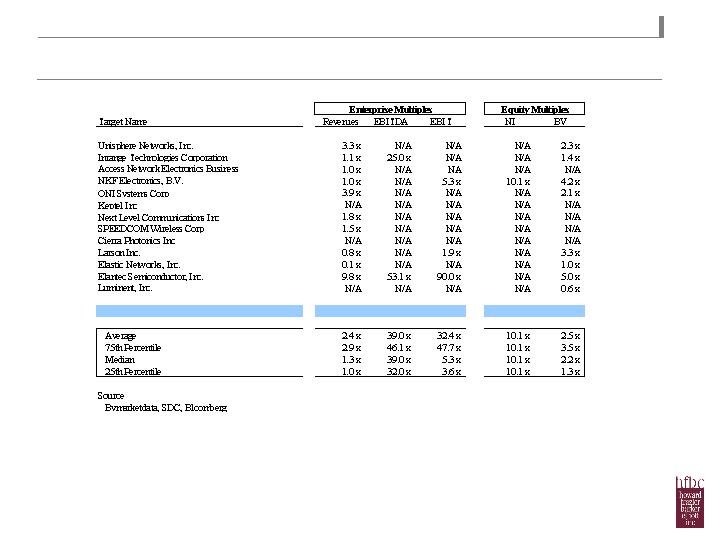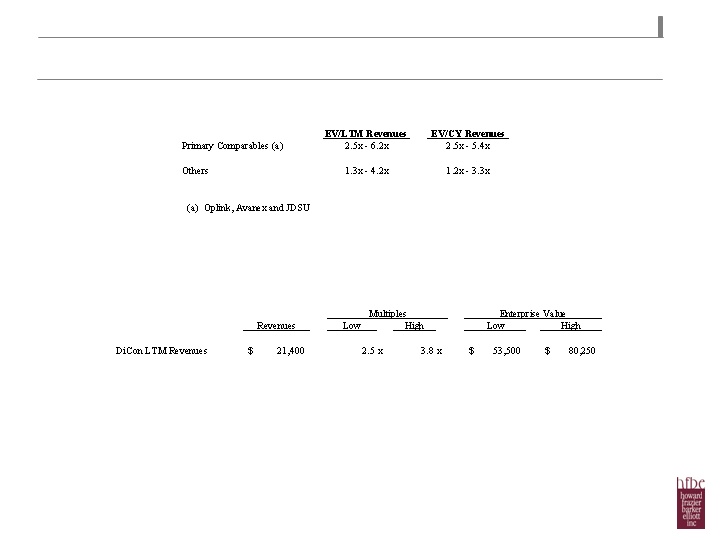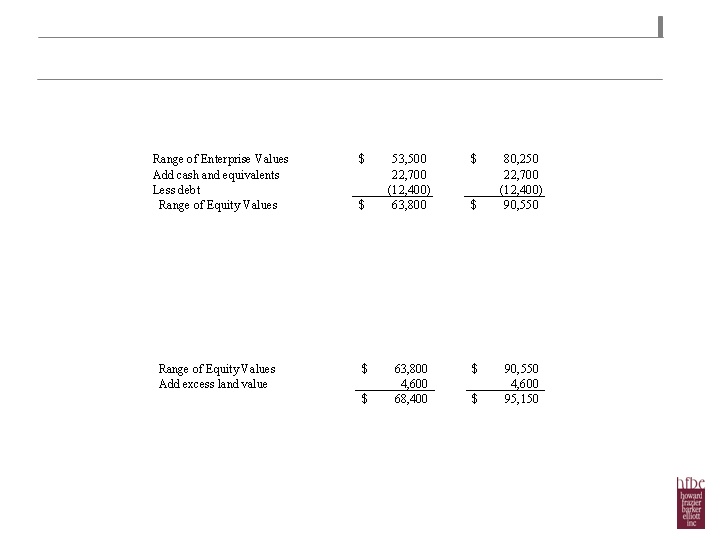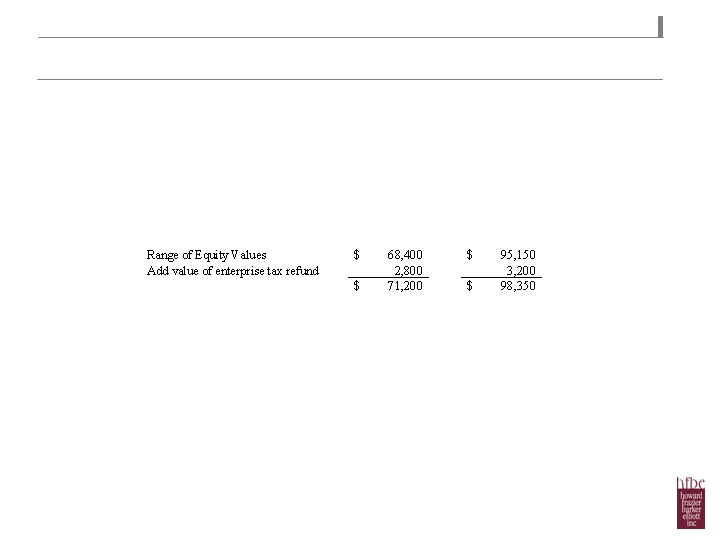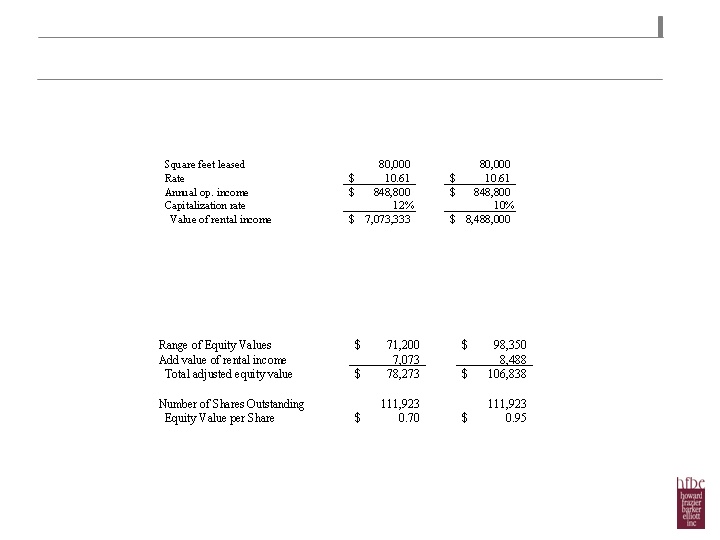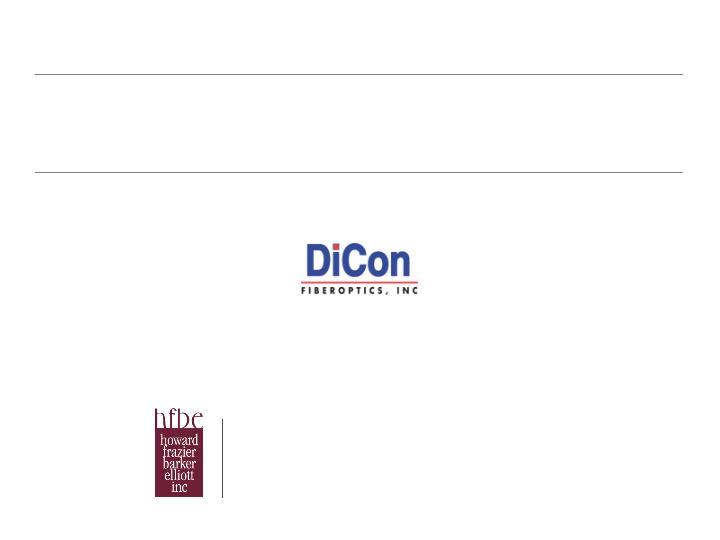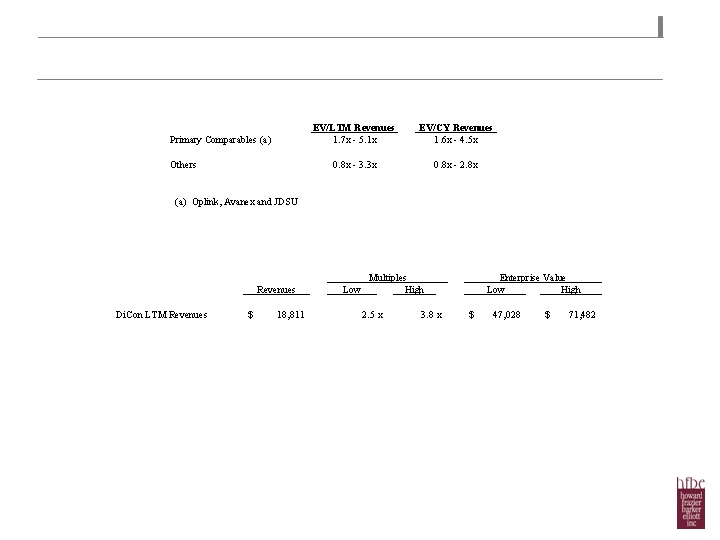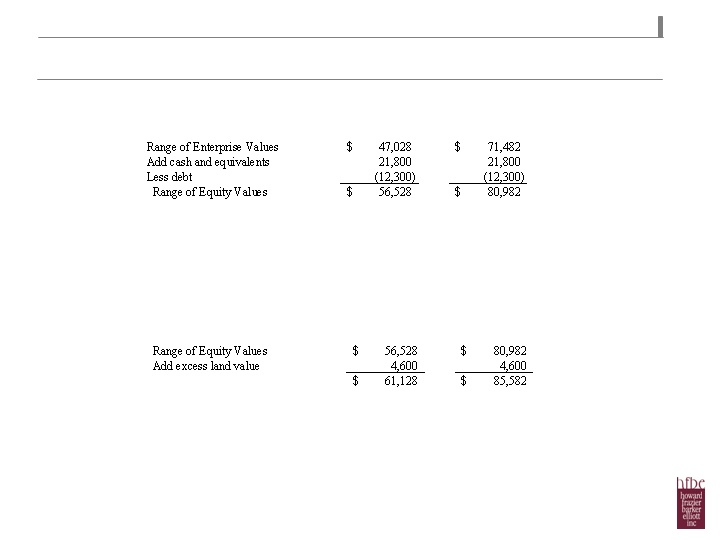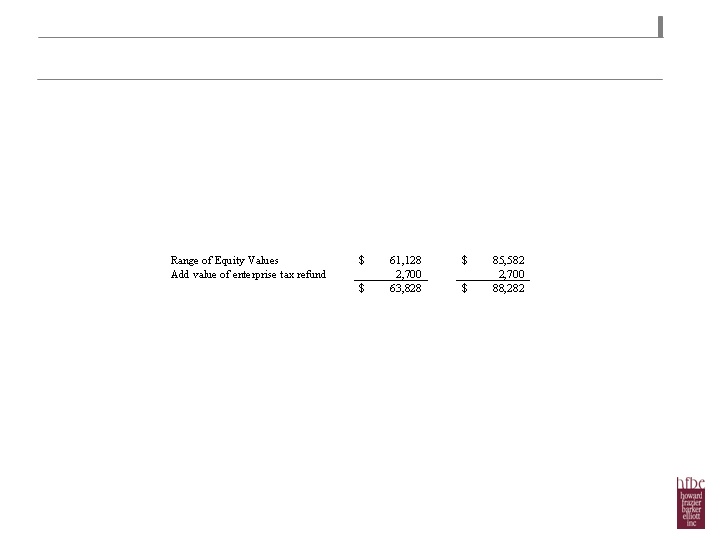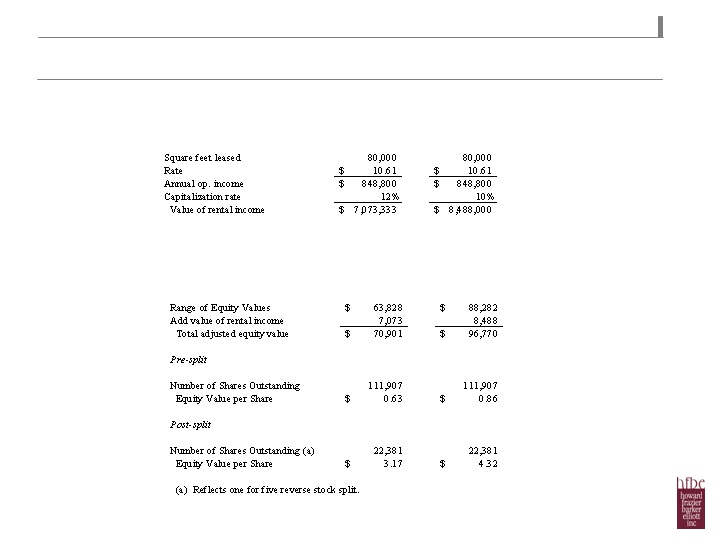UNITED STATES
SECURITIES AND EXCHANGE COMMISSION
WASHINGTON, D.C. 20549
SCHEDULE 14A
PROXY STATEMENT PURSUANT TO SECTION 14(A) OF
THE SECURITIES EXCHANGE ACT OF 1934
Filed by the Registrant [X]
Filed by a Party other than the Registrant [ ]
Check the appropriate box:
[X] Preliminary Proxy Statement
[ ] Confidential, for Use of the Commission Only (as permitted by Rule 14a-6(e)(2))
[ ] Definitive Proxy Statement
[ ] Definitive Additional Materials
[ ] Soliciting Material Pursuant to Rule 14a-12
DICON FIBEROPTICS, INC.
(Name of Registrant as Specified In Its Charter)
(Name of Person(s) Filing Proxy Statement if other than the Registrant)
Payment of Filing Fee (Check the appropriate box):
| [ | ] | Fee computed on table below per Exchange Act Rules 14a-6(i)(4) and 0-11. |
[X] Fee paid previously with preliminary materials.
| [ | ] | Check box if any part of the fee is offset as provided by Exchange Act Rule 0-11(a)(2) and identify the filing for which the offsetting fee was paid previously. Identify the previous filing by registration statement number, or the Form or Schedule and the date of its filing. |
| 1. | Amount Previously Paid: |
| 2. | Form, Schedule or Registration Statement No.: |
September , 2006
Dear Fellow Shareholder:
The Board of Directors of DiCon Fiberoptics, Inc. (the "Company"), after much deliberation, has decided it is in the Company’s best interest to deregister the Company’s shares of common stock with the Securities and Exchange Commission (the "SEC"). The purpose of the transaction is to eliminate the substantial time and expense required to comply with reporting and related requirements under the Securities Exchange Act of 1934, as amended, including the Sarbanes-Oxley Act of 2002, and to increase our operational flexibility.
Deregistering the shares will allow the Company to cease filing reports with the SEC and will substantially reduce or eliminate other compliance costs, which primarily include legal and auditing fees, as well as internal costs associated with document preparation and review. The Company has estimated that by taking this step, it can realize recurring annual cost savings of up to approximately $125,000, not including time and resources of the management team and Company personnel. Additionally, it would help the Company avoid the additional cost of complying with Section 404 of the Sarbanes-Oxley Act, which currently is expected to become effective for the Company commencing with the fiscal year ending March 31, 2008.
The Board has concluded that the costs associated with remaining registered with the SEC outweigh the benefits, particularly in light of the fact that many of the new compliance measures created by the Sarbanes-Oxley Act are designed for companies much larger than the Company and are unnecessarily burdensome to small companies like ours, and provide modest additional benefit to the Company’s shareholders.
There is no established public trading market for the Company’s common stock. Consequently, the deregistration of the Company’s stock will not affect the liquidity of the Company’s common stock.
To successfully complete the transaction, the Company will need to reduce the number of its shareholders of record below 300. The Company currently has 305 shareholders of record. The Board has proposed a two-step transaction (the "Transaction"): (1) a 5-for-1 reverse stock split (the "Stock Split") to increase the number of shareholders holding less than 100 shares of the Company’s stock ("Odd-lot Shareholders") which would be (2) followed by an issuer tender offer (the "Tender Offer") at a price of $5.00 per post-Stock Split share. Provided a sufficient number of Odd-lot Shareholders tender their shares, the Tender Offer may have the result of reducing our number of record holders below 300. In the Transaction, shareholders will be affected as follows:
| · | All shareholders of the Company before the Stock Split will remain shareholders of the Company after the Stock Split. The Stock Split will affect all of DiCon’s shareholders uniformly and will not affect any shareholder’s percentage ownership interest in DiCon, except to the extent that the Stock Split results in any of DiCon’s shareholders owning a fractional share (which will be cashed out by DiCon). All shareholders will have the number of their shares reduced and will retain the same proportionate interest in the Company. Common stock issued pursuant to the Stock Split will remain fully paid and non-assessable. |
| · | All shareholders will have an opportunity to participate in the Tender Offer; and |
| · | After the Stock Split, the number of Odd-lot Shareholders will increase from 6 to 78 and the total number of shares held by Odd-lot Shareholders will increase from 371 to 20,708 on a pre-stock split basis (or from 74 to 4,141 shares on a post-stock split basis). |
The Board of Directors established the purchase prices of the shares following a valuation of the Company’s common stock by Howard Frazier Barker Elliot, Inc., an independent financial consultant.
The notice of annual meeting of shareholders, proxy statement and proxy card are included with this letter along with copies of the Company’s most recent Form 10-KSB. We encourage you to review the materials carefully. On pages 9-12 of the proxy statement you will find a section entitled "Summary Term Sheet" that summarizes the terms of the proposed Stock Split and "Questions and Answers" that are intended to address some of the questions you may have. After reviewing the proxy statement and other materials, please complete the proxy card and return it in the enclosed envelope at your earliest convenience.
On behalf of the Board of Directors, I would like to express our great appreciation of your loyalty and commitment to DiCon Fiberoptics, Inc. Should you have any questions regarding this matter, please feel free to contact me at (510) 620-5000. We will be happy to address any questions or concerns that you may have on this matter.
Sincerely,
/s/ Ho-Shang Lee
_______________________________
Ho-Shang Lee
President, Chief Executive Officer and Director
DiCon Fiberoptics, Inc.
September , 2006
NOTICE OF ANNUAL MEETING OF
SHAREHOLDERS OF
DICON FIBEROPTICS, INC.
To the Shareholders of DiCon Fiberoptics, Inc. ("DiCon"):
NOTICE IS HEREBY GIVEN that the annual meeting of the shareholders of DiCon will be held at the DiCon executive offices, 1689 Regatta Blvd., Richmond, CA 94804, on , October 15, 2006, commencing at 10:00 a.m. local time, for the following purposes:
| 1. | To elect the directors of DiCon. The nominees presented by the Board of Directors for election are Ho-Shang Lee, Gilles M. Corcos, C.L. Lin, Andrew F. Mathieson, and Dunson Cheng. |
| 2. | To ratify the appointment of Burr, Pilger & Mayer LLP as the Independent Registered Public Accounting Firm of DiCon Fiberoptics, Inc. for the fiscal year ending March 31, 2007. |
| 3. | To approve an amendment to the Company’s Articles of Incorporation to effect a 5-for-1 reverse stock split. |
| 4. | To transact such other business as may properly come before the meeting. |
/s/ Anthony T. Miller
_______________________________
Anthony T. Miller
General Counsel and Secretary
Enclosures
TO ASSURE THAT A QUORUM IS PRESENT AT THE ANNUAL MEETING, PLEASE DATE, SIGN AND PROMPTLY RETURN THE ENCLOSED PROXY WHETHER OR NOT YOU EXPECT TO ATTEND THE ANNUAL MEETING. A SELF-ADDRESSED, POSTAGE-PAID RETURN ENVELOPE IS ENCLOSED FOR YOUR CONVENIENCE.
NEITHER THE SECURITIES AND EXCHANGE COMMISSION NOR ANY STATE SECURITIES COMMISSION HAS APPROVED OR DISAPPROVED OF THE STOCK SPLIT, PASSED UPON THE MERITS OR FAIRNESS OF THE STOCK SPLIT, OR PASSED UPON THE ADEQUACY OR ACCURACY OF THE DISCLOSURE IN THIS DOCUMENT. ANY REPRESENTATION TO THE CONTRARY IS A CRIMINAL OFFENSE.
TABLE OF CONTENTS
& #160; Page
SUMMARY TERM SHEET; QUESTIONS AND ANSWERS .....................................................................................................................................................................................2
IMPORTANT NOTICES ...................................................................................................................................................................................................................................................7
PROPOSAL NO. 1ELECTION OF DIRECTORS .............................................................................................................................................................................................................8
Nominees .............................................................................................................................................................................................................................................................................8
Information Concerning the Board of Directors ............................................................................................................................................................................................................9
Meetings of the Board of Directors ................................................................................................................................................................................................................................9
Shareholder Communications with the Board of Directors .........................................................................................................................................................................................9
Compensation of Directors ............................................................................................................................................................................................................................................10
REQUIRED VOTE ............................................................................................................................................................................................................................................................10
RECOMMENDATION OF THE BOARD .....................................................................................................................................................................................................................10
PROPOSAL NO. 2 APPOINTMENT OF INDEPENDENT REGISTERED PUBLIC ACCOUNTING FIRM ........................................................................................................10
Audit Fees .........................................................................................................................................................................................................................................................11
Audit-Related Fees ..........................................................................................................................................................................................................................................11
All Other Fees ...................................................................................................................................................................................................................................................11
Policy on Board Approval of Accountant Services ....................................................................................................................................................................................11
REQUIRED VOTE ..............................................................................................................................................................................................................................................................11
RECOMMENDATION OF THE BOARD .......................................................................................................................................................................................................................11
PROPOSAL NO. 3 AMENDMENT TO THE COMPANY’S ARTICLES OF INCORPORATION TO EFFECT A 5-FOR-1 REVERSE STOCK SPLIT .................................11
CAUTIONARY NOTICE REGARDING FORWARD-LOOKING STATEMENTS ....................................................................................................................................................12
SPECIAL FACTORS ..........................................................................................................................................................................................................................................................12
Background of the Transaction ........................................................................................................................................................................................................................12
Structure and Effects of the Transaction ........................................................................................................................................................................................................17
Alternatives to the Transaction .......................................................................................................................................................................................................................22
FINANCING, SOURCE OF FUNDS AND EXPENSES ..................................................................................................................................................................................................22
FAIRNESS OF THE TRANSACTION .............................................................................................................................................................................................................................23
Fairness Opinions of Financial Advisor .........................................................................................................................................................................................................29
Valuation Analysis .............................................................................................................................................................................................................................................31
TABLE OF CONTENTS
(continued)
& #160; Page
Disadvantages of the Stock Split .....................................................................................................................................................................................................................35
Conclusion ..........................................................................................................................................................................................................................................................36
MATERIAL FEDERAL INCOME TAX CONSEQUENCES .........................................................................................................................................................................................36
ADDITIONAL INFORMATION REGARDING THE TRANSACTION .....................................................................................................................................................................38
Unavailability of Dissenters’ Rights ...............................................................................................................................................................................................................38
Structure and Effects of the Transaction .......................................................................................................................................................................................................38
Escheat Laws .....................................................................................................................................................................................................................................................38
Termination of Stock Split ...............................................................................................................................................................................................................................39
Price Range Of Shares; Dividends .................................................................................................................................................................................................................39
Recent Stock Repurchases ..............................................................................................................................................................................................................................39
.
Financial Information ........................................................................................................................................................................................................................................40
INTEREST OF DIRECTORS AND OFFICERS; TRANSACTIONS AND ARRANGEMENTS CONCERNING SHARES ..................................................................................41
REGULATORY APPROVALS .........................................................................................................................................................................................................................................42
REQUIRED VOTE ..............................................................................................................................................................................................................................................................42
RECOMMENDATION OF THE BOARD .......................................................................................................................................................................................................................43
EXECUTIVE COMPENSATION ......................................................................................................................................................................................................................................43
Management And Affiliates ............................................................................................................................................................................................................................43
Summary Compensation Table ........................................................................................................................................................................................................................44
Options Grants in Last Fiscal Year ..................................................................................................................................................................................................................44
Aggregated Option Exercises in Last Fiscal Year and Fiscal Year - End Option Values ........................................................................................................................44
Board Report on Executive Compensation ....................................................................................................................................................................................................45
SECURITY OWNERSHIP OF CERTAIN BENEFICIAL OWNERS,
MANAGEMENT AND DIRECTORS .............................................................................................................................................................................................................46
Security Ownership of Certain Beneficial Owners .......................................................................................................................................................................................46
Security Ownership of Management and Directors ....................................................................................................................................................................................47
Changes in Control ...........................................................................................................................................................................................................................................47
CERTAIN RELATIONSHIPS AND RELATED TRANSACTIONS ...........................................................................................................................................................................48
Compliance with Section 16(a) of the Exchange Act ...................................................................................................................................................................................48
OTHER BUSINESS ...........................................................................................................................................................................................................................................................48
SHAREHOLDER PROPOSALS - 2007 ANNUAL MEETING ....................................................................................................................................................................................49
TABLE OF CONTENTS
(continued)
� 0; Page
PROXY ...........................................................................................................................................................................................................................................................................50
APPENDIX A - PROPOSED FORM OF CERTIFICATE OF AMENDMENT TO ARTICLES OF INCORPORATION OF DICON FIBEROPTICS, INC.
TO EFFECT REVERSE STOCK SPLIT .........................................................................................................................................................................................A-1
APPENDIX B - FAIRNESS OPINION PRESENTATION OF HOWARD FRAZIER BARKER ELLIOTT, INC DATED APRIL 19, 2006 ..................................................B-1
APPENDIX C - FAIRNESS OPINION PRESENTATION OF HOWARD FRAZIER BARKER ELLIOTT, INC DATED JULY 6, 2006 ......................................................C-1
APPENDIX D - FAIRNESS OPINION OF HOWARD FRAZIER BARKER ELLIOTT, INC. DATED APRIL 19, 2006 ................................................................................D-1
APPENDIX E - FAIRNESS OPINION OF HOWARD FRAZIER BARKER ELLIOTT, INC. DATED JULY 6, 2006 .....................................................................................E-1
PROXY STATEMENT
DiCon Fiberoptics, Inc. ("DiCon," the "Company", "we" or "us") is providing this Proxy Statement in connection with the solicitation by the Board of Directors of DiCon of proxies to be voted at DiCon’s annual shareholders meeting (the "Annual Meeting") to be held on , October 15, 2006, at 10:00 a.m., local time, in the auditorium of our executive offices, 1689 Regatta Blvd., Richmond, CA 94804.
We are asking shareholders to complete and return to us before the meeting the enclosed proxy.
We are asking shareholders to vote for the election of directors. Biographical information about the directors is set forth in the Section titled "Nominees" in Proposal No. 1.
We are asking shareholders to ratify the appointment of Burr, Pilger & Mayer LLP as the Independent Registered Public Accounting Firm for DiCon for the fiscal year ending March 31, 2007.
We are asking the shareholders to approve a proposal to amend (the "Amendment") the Articles of Incorporation, as amended, of the Company to effect a 5-for-1 reverse stock split (the "Stock Split") of the shares of common stock of the Company, no par value (the "common stock"). The Stock Split is part of a two-step transaction (the "Transaction") intended to reduce the number of shareholders of record below 300 and subsequently suspend the Company's obligation to file reports, statements and other information with the Securities and Exchange Commission (the "SEC" or the "Commission"). The two steps consist of (1) a 5-for-1 reverse stock split to increase the number of shareholders holding less than 100 shares of the common stock ("Odd-lot Shareholders") followed by (2) an issuer tender offer (the "Tender Offer").
DiCon will not issue any fractional shares of common stock in connection with the Stock Split. In lieu of issuing any fractional shares resulting from the Stock Split, the Company will pay in cash an amount equal to $5.00 multiplied by each fractional share resulting from the Stock Split (determined after aggregating all of the common stock held by each holder).
DiCon shareholders should not return stock certificates with the enclosed proxy.
The solicitation of proxies in connection with the Stock Split proposal does not constitute a tender offer or an offer to purchase the shares of any shareholder. Any such offer will be made pursuant to separate tender offer materials complying with the requirements of Section 13(e) of the Securities Exchange Act of 1934, as amended (the "Exchange Act"), and Rule 13e-4 thereunder.
Lastly, we are asking the shareholders to indicate whether or not they authorize the proxy holder to vote on other business that may come before the meeting. At the present time, we know of no other business to be presented at the Annual Meeting.
The Proxy Statement and form of proxy are first being sent or delivered to shareholders on September , 2006, to shareholders of record on September 12,, 2006 (the "record date"). There were 111,907,283 shares of DiCon common stock outstanding as of the close of business on September 12, 2006. The presence, in person or by proxy, of shareholders representing a majority of such outstanding shares constitutes a quorum for the transaction of business at the Annual Meeting.
A shareholder is entitled to one vote for each share held. In the election for directors, if one or more shareholders has given notice at the Annual Meeting prior to the voting of the shareholder’s intent to cumulate votes, then every shareholder entitled to vote may cumulate votes and give one candidate a number of votes equal to the number of directors to be elected multiplied by the number of shares which the shareholder is entitled to vote, or distribute the votes on the same principle among as many candidates as the shareholder chooses. The candidates receiving the highest number of votes up to the number of directors to be elected shall be elected. For the proposal to ratify the appointment of Burr, Pilger & Mayer LLP as the Independent Registered Public Accounting Firm for DiCon for the fiscal year ending March 31, 2007, the affirmative vote of a majority of the shares represented and voting with respect to such matter is required. For the proposal to approve the Stock Split, the affirmative vote of a majority of the shares outstanding as of the record date is required.
If not revoked and if no instructions are indicated on the proxy card with respect to one or more items, the proxy will be voted (1) "FOR" the election of directors in the manner described in the Proxy Statement, (2) "FOR" the ratification of the appointment of Burr, Pilger & Mayer LLP as Independent Registered Public Accounting Firm of DiCon for the fiscal year ending March 31, 2007, and (3) "FOR" the Amendment of the Articles of the Company to effect the Stock Split, and in the discretion of the proxies as to other matters that may properly come before the Annual Meeting.
Abstentions on any matter will be treated as present and entitled to vote for purposes of determining the presence or absence of a quorum, and as voting on the proposal in determining the total number of votes cast with respect to a proposal submitted to shareholders for a vote. Since none of the shares are held in street name, there will be no "Broker Non-Votes." On any matter which requires the affirmative vote of a majority of the outstanding shares, abstentions have the same effect as a negative vote. Accordingly, abstentions can have the effect of preventing approval of the Amendment of the Articles of Incorporation of the Company to effect the Stock Split. While there is no definitive specific statutory or case law authority in California concerning the proper treatment of abstentions, we believe that the tabulation procedures to be followed as discussed above are consistent with the general statutory requirements in California concerning determination of a quorum and voting of shares.
You may revoke your proxy prior to the vote pursuant thereto by a written notice delivered to DiCon stating that the proxy is revoked, by submitting a later dated proxy or by voting in person at the Annual Meeting.
Whether or not you plan to attend the Annual Meeting in person, please complete and return the enclosed proxy as promptly as possible in the enclosed postage prepaid envelope.
We urge you to read this Proxy Statement carefully and in its entirety, including the attached appendices.
SUMMARY TERM SHEET; QUESTIONS AND ANSWERS
This Summary Term Sheet highlights selected information about the proposed Stock Split included elsewhere in this Proxy Statement. This summary is qualified in its entirety by reference to the more detailed information appearing or incorporated by reference elsewhere in this Proxy Statement. We encourage you to read the entire Proxy Statement before you vote at the Annual Meeting.
| · | To successfully complete the Transaction, the Company will need to reduce the number of its shareholders of record below 300. The Company currently has 305 shareholders of record. The Board has proposed a two-step Transaction: (1) the Stock Split to increase the number of shareholders of record holding less than 100 shares of the common stock which would be (2) followed by an issuer tender offer. See "Special Factors- Structure and Effects of the Transaction." |
| · | The purpose of the Transaction is to reduce the number of the Company’s shareholders of record so that we may deregister our common stock under the Exchange Act to suspend our SEC reporting obligations. The Board’s primary reason for engaging in the Transaction is to reduce the cost to the Company of filing reports, statements and other information with the SEC and otherwise comply with the reporting and related requirements of the Exchange Act. If we so deregister, we will not be subject to certain extra burdens imposed on public companies by the Sarbanes-Oxley Act of 2002 (the "Sarbanes-Oxley Act"). We will no longer file periodic reports with the SEC, including annual and quarterly reports on Form 10-KSB and Form 10-QSB, nor will we be subject to the SEC’s proxy rules. We also will no longer have to furnish to our shareholders financial statements audited by an independent registered public accounting firm. Other reasons for, and anticipated consequences of, the Stock Split are discussed in this Proxy Statement. See "Special Factors-Background of the Transaction." |
| · | The Stock Split is subject to shareholder approval at the Annual Meeting. However, the Tender Offer is not subject to shareholder approval. If the Stock Split is approved, the Stock Split will be effected simultaneously for all outstanding shares of DiCon Common stock. A 5-for-1 reverse stock split of the shares will occur on the date (the "Effective Date") that the California Secretary of State accepts for filing the certificate of amendment to our Articles reflecting the Amendment (the "Certificate of Amendment"). The Stock Split will affect all of DiCon’s shareholders uniformly and will not materially change any shareholder’s percentage ownership interest in DiCon, except to the extent that the Stock Split results in any of DiCon’s shareholders owning a fractional share. Fractions of shares resulting from the Stock Split will be immediately cancelled and exchanged for cash in the amount of $5.00 multiplied by the fraction (the "Fractional Share Price"). The Stock Split will have no material effect on the relative voting power of the shareholders. Common stock issued pursuant to the Stock Split will remain fully paid and non-assessable. See "Special Factors- Structure and Effects of the Transaction." |
| · | All stock certificates representing issued and outstanding shares of common stock immediately prior to the Stock Split will be cancelled. After the Certificate of Amendment has been filed with the California Secretary of State, the Company will send shareholders transmittal materials that will inform shareholders how to collect cash to be paid for fractional shares and receive copies of new stock certificates. See "Additional Information Regarding The Transaction - Structure and Effects of the Transaction." |
| · | Termination of our obligations to file reports, statements and other information with the SEC will not have an effect on the liquidity of the Company’s common stock since our stock is not publicly traded. See "Special Factors-Background of the Transaction." |
| · | For a discussion of the material federal income tax consequences of the Stock Split, see "Material Federal Income Tax Consequences." |
| · | Howard Frazier Barker Elliott, Inc. (“HFBE”), an independent financial advisor to the Special Committee of the Board of Directors, has delivered its Opinion Update dated July 6, 2006 to the Special Committee. The Opinion Update states that, as of its date, the Fractional Share Price to be paid to our shareholders in the Stock Split and the Tender Offer Price to be paid to our shareholders in the Tender Offer were fair, from a financial point of view, to the shareholders, including the unaffiliated shareholders. This Opinion Update was one of the factors considered by the Special Committee and the Board in determining the price to be paid in the Transaction. A copy of this Opinion Update is attached as Appendix E to this Proxy Statement. The opinion is based upon and subject to the various assumptions and limitations described in the opinion. Please read the opinion in its entirety. See "Fairness of the Transaction- Fairness Opinions of Financial Advisor." |
| · | The Stock Split will not be effective unless and until DiCon’s shareholders approve the proposed Amendment. We anticipate that the Certificate of Amendment will be filed with the Secretary of State, and the Stock Split will take place, shortly after the Annual Meeting. See "Special Factors-Summary Term Sheet" and "Special Factors-Structure and Effects of the Transaction." |
| · | No dissenters’ rights for the fractional shares are available to shareholders who vote against the Stock Split under California law or under the Company’s Articles of Incorporation or Bylaws. See "Additional Information Regarding The Transaction-Unavailability of Dissenters’ Rights." |
| · | We estimate that approximately $533 will be required for the Company to pay for the fractional shares cashed out as a result of the Stock Split and the Tender Offer for up to 30,900 post-Stock Split shares of common stock (or 154,500 shares on a pre-Stock Split basis) at a purchase price of $5.00 per share would require payment by the Company of approximately $154,500. In addition, we estimate that we will incur approximately $160,000 in transaction expenses related to the Transaction. We intend to pay for the shares to be cashed out and the expenses of the Transaction from the working capital of the Company. At March 31, 2006, DiCon (including its subsidiary) had approximately $21.2 million in cash and cash equivalents and marketable securities. See " Financing, Source Of Funds And Expenses." |
| · | The Board established a Special Committee for this Transaction. The Board considered the Company’s prior associations with each member of the Special Committee and concluded that such prior associations did not compromise each member’s independence. See "Special Factors - Background of the Transaction." |
| · | DiCon’s Special Committee chose not to adopt any of the protective structures typical of transactions of this kind, such as a Special Committee with separate representatives, conditioning the Stock Split on the approval by a majority of the unaffiliated shareholders, conditioning the Tender Offer on tenders by a majority of the unaffiliated shareholders, and the like. See "Special Factors-Background of the Transaction" and "Fairness of the Transaction." |
| · | The Special Committee and the Board of Directors each believes that the Stock Split is in the best interests of the Company and its shareholders and has unanimously approved the Stock Split. The Board recommends that shareholders vote "FOR" approval of the Amendment to effect the Stock Split. See "Special Factors-Background of the Transaction." |
| · | The Special Committee and the Board of Directors have each determined that the Stock Split, including the Fractional Share Price to be paid in connection with the Stock Split, is fair to the Company’s shareholders, including its unaffiliated shareholders. See "Special Factors- Background of the Transaction" and "Fairness of the Transaction." |
| · | The Board may, in its discretion, withdraw the Stock Split from the agenda of the Annual Meeting prior to any shareholder vote if it believes that such withdrawal is in the Company’s best interests. Although the Board presently believes that the Transaction, including the Stock Split, is in the Company’s best interests and has recommended a vote for the Stock Split, circumstances could change prior to the Effective Date that may render the Transaction inadvisable. Among other things, the Board may withdraw the Stock Split from the agenda if there is: (1) any change in the nature of the Company’s shareholdings that would prevent us from reducing the number of record holders below 300 as a result of the Transaction; (2) any change in the number of our record holders that would allow the Company to deregister its shares without effecting the Transaction; (3) any change in the number of the shares to be exchanged for cash in the Transaction that would substantially increase the cost and expense of the Transaction (as compared to what is currently anticipated); or (4) any adverse change in the condition of the Company that would render the Transaction inadvisable. See "Additional Information Regarding The Transaction - Termination of Stock Split." |
The following questions and answers are intended to briefly address commonly asked questions regarding the Annual Meeting and the Stock Split. These questions and answers may not address all questions that may be important to you as a shareholder. Please refer to the more detailed information contained elsewhere in this Proxy Statement, the appendices to this Proxy Statement, and the information and documents referred to or incorporated by reference in this Proxy Statement.
When and where is the Annual Meeting?
The Annual Meeting will be held at the DiCon executive offices, 1689 Regatta Blvd., Richmond, California 94804, on , October 15, 2006, at 10:00 a.m., local time.
How many votes do I have?
You will have one vote for each share that you own on the record date, which is September 12, 2006.
How many votes can be cast by all shareholders?
As of the record date, 111,907,283 shares were issued and outstanding and held of record by 305 shareholders.
Can I change my vote?
Yes, you may revoke your proxy by either (i) submitting a new proxy with a later date or a written revocation so long as the new proxy or written revocation is received by the Company before the proxy is exercised or (ii) by attending the Annual Meeting and voting in person or giving notice of revocation in open meeting before the proxy is exercised.
What happens if the meeting is postponed or adjourned?
Your proxy will be valid and may be voted at the postponed or adjourned meeting. You will still be able to change or revoke your proxy until it is voted.
Why should I vote to approve the Stock Split set forth in Proposal No. 3?
The Board believes that the Stock Split is in the best interests of all of the Company’s shareholders. The Stock Split will increase the number of Odd-lot Shareholders, which will allow us to conduct a Tender Offer seeking to reduce the number of record holders of our shares below 300 persons. If that reduction is achieved, we will be able to deregister our shares under the Exchange Act and suspend our SEC reporting obligations. We also will no longer have to furnish our shareholders financial statements audited by an independent registered public accounting firm. The Board believes that the monetary expense and the burden on management incident to continued compliance with the Exchange Act outweigh any material benefits derived from continued registration of the shares.
As you are aware, in April 2006 the Company commenced an issuer tender offer for 154,500 shares at the price of $1.00 per share for the purpose of reducing the number of shareholders below 300 (the "April Tender Offer"). The Company withdrew the April Tender Offer because the limited number of Odd-Lot Shareholders at the time, coupled with the pro ration purchase requirement triggered by the oversubscription, meant that to continue with the April Tender Offer would not achieve the Company’s stated purpose of reducing the Company’s holders of record below 300. As stated in the announcement to withdraw the April Tender Offer, the Board of Directors has remained committed to reducing the number of holders of record below 300 so that the Company may deregister under the Exchange Act and suspend its SEC reporting obligations.
How will the Transaction affect the day-to-day operations?
The Transaction will have limited effect on the Company’s business and operations. After the Transaction is completed, the officers and directors of the Company will continue to hold the positions they currently hold. However, provided that the number of shareholders of record is reduced below 300 and the Company deregisters its common stock under the Exchange Act, after the Transaction the Company will no longer be an SEC reporting Company and it may be detrimental DiCon shareholders in that as a result of deregistration, public information regarding DiCon will be reduced substantially following deregistration. Additionally the remaining shareholders would not be subject to the protections of the Sarbanes-Oxley Act.
How were the Fractional Share Price and Tender Offer Price determined?
The Board retained HFBE, an independent financial advisor experienced in the financial analysis and valuation of companies, to assist the Board in determining the Fractional Share Price and the Tender Offer Price. On April 19, 2006, HFBE delivered a valuation report (the "April Valuation Report") to the Special Committee of the Board of Directors, which had been established for the purpose of evaluating the various methods of reducing the number of holders of record below 300, approving the Transaction and determining the fairness of the Transaction (the "Special Committee"), valuing the shares at $0.70-0.95 per share and issued a fairness opinion (the "April Fairness Opinion") to the Special Committee that the $1.00 tender offer price for the April Tender Offer was fair, from a financial point of view, to the unaffiliated shareholders. On July 6, 2006, HFBE delivered an updated valuation report (the "Valuation Update," together with the April Valuation Report, the "Valuation Reports") to the Special Committee valuing the Company's shares at $0.63 to $0.86 per pre-Stock Split share (or $3.17 to $4.32 per post-Stock Split share) and issued a fairness opinion update (the "Opinion Update," together with the April Fairness Opinion, the "Fairness Opinions") to the Special Committee that the Fractional Share Price of $5.00 per post-Stock Split share and the Tender Offer Price of $5.00 per post-Stock Split share were fair, from a financial point of view, to the unaffiliated shareholders. The Special Committee considered the independent valuation and other factors and determined that the Fractional Share Price of $5.00 for each post-Stock Split share and Tender Offer Price of $5.00 for each post-Stock Split share are fair. On July 17, 2006, the Special Committee reported its determination to the Board and the Board ratified this determination that the Fractional Share Price of $5.00 for each post-Stock Split share and Tender Offer Price of $5.00 for each post-Stock Split share are fair. See "Fairness of the Transaction." A copy of the April Fairness Opinion and the Opinion Update is attached for your review as Appendices D and E, respectively, to this Proxy Statement.
May I obtain a copy of Howard Frazier Barker Elliott, Inc.’s valuation report?
In connection with the Fairness Opinions, HFBE has prepared and delivered to the Company the Valuation Reports that detail the valuation principles and methodologies used to determine the fairness of the proposed transaction. A copy of the April Valuation Report and the Valuation Update are attached as Appendices B and C, respectively, to this Proxy Statement.
When will the Stock Split be completed?
We plan to complete the Stock Split as soon as practicable after we obtain the necessary shareholder approval in October of 2006.
When will the Transaction be completed?
We plan to commence the Tender Offer immediately after the Stock Split in October of 2006 and conclude the Tender Offer in November of 2006.
Will I receive any declared dividends for shares that are cashed out or tendered?
So long as the shareholder held the shares on the record date for the declared dividend, he or she will be entitled to receive declared dividends on his or her shares, even if the declared dividend is not paid until after the Stock Split has been completed or after the shares have been sold into the Tender Offer.
What do I need to do now?
Mail your signed proxy card in the enclosed return envelope as soon as possible so that your shares may be represented at the Annual Meeting. If you sign and return your proxy but do not include instructions on how to vote, your shares will be voted "FOR" the proposal to amend the Company’s Articles to effect the Stock Split.
IMPORTANT NOTICES
We have not authorized any person to give any information or to make any representations other than the information and statements included in this Proxy Statement. You should not rely on any other information. The information contained in this Proxy Statement is correct only as of the date of this Proxy Statement, regardless of the date it is delivered or when shares are converted.
You should not construe the contents of this Proxy Statement or any communication from the Company, whether written or oral, as legal, tax, accounting or other expert advice. You should consult with your own counsel, accountant or other professional advisor, as appropriate.
PROPOSAL NO. 1
ELECTION OF DIRECTORS
The Board has nominated the five persons named below to serve as directors to hold office until the next annual meeting of shareholders, until their respective successors have been elected and qualified or until such directors’ earlier resignation or removal. The five nominees receiving the highest number of votes of the shares present in person or represented by proxy at the Annual Meeting and voting on the election of directors will be elected. All of the nominees have served as directors of the Company since the last annual meeting of shareholders. If any nominee for any reason is unable to serve, or for good cause, will not serve as a director, the proxies may be voted for such substitute nominee as the proxy holder may determine. The Company is not aware of any nominee who will be unable to or, for good cause, will not serve as a director.
Nominees
DiCon’s directors and executive officers as of June 30, 2006, are as follows:
| Name | | Age | | Position |
| Ho-Shang Lee, Ph.D. | | 47 | | President, Chief Executive Officer and Director |
| Gilles M. Corcos, Ph.D. | | 79 | | Chairman of the Board and Director |
| Chun-Lung Lin | | 47 | | President of Global Fiberoptics Inc. and Director |
| Andrew F. Mathieson | | 49 | | Director |
| Dunson Cheng, Ph.D. | | 61 | | Director |
Ho-Shang Lee, Ph.D., President, Chief Executive Officer and Director. Dr. Ho-Shang Lee has served as DiCon’s President, Chief Executive Officer and a member of the Board of Directors since the inception of DiCon in June 1986. Dr. Lee earned his B.S. in Engineering from National Cheng-Kung University, Taiwan, in 1979 and his M.S. and Ph.D. in Mechanical Engineering from the University of California, Berkeley in 1984 and in 1986, respectively.
Gilles M. Corcos, Ph.D., Chairman of the Board and Director. Dr. Gilles M. Corcos has served as Chairman of the Board and Director since 1986. Dr. Corcos has also served as Chief Financial Officer. From 1958 to 1990, Dr. Corcos was a professor in the University of California, Berkeley’s Mechanical Engineering Department. Dr. Corcos holds a Ph.D. from the University of Michigan and a Doctorat d’Etat (Physics) from the University of Grenoble, France. Dr. Corcos also serves as a director of Agua Para La Vida, a non-government organization incorporated in the State of California.
Chun-Lung Lin, President of Global Fiberoptics Inc. ("Global") and Director. Chun-Lung Lin is the President of Global, DiCon’s subsidiary in Taiwan. Before joining Global in January 2000, Mr. Lin owned and managed Guo Bao Construction Co. Ltd. in Taiwan for ten years. Mr. Lin joined DiCon’s Board of Directors in June 2000. Mr. Lin earned a B.S. and an M.S. in Engineering from National Cheng-Kung University, Taiwan, in 1979 and 1981, respectively. He is the brother-in-law of Dr. Ho-Shang Lee.
Andrew F. Mathieson, Director. Andrew F. Mathieson has served as a member of the Board of Directors since June 2000. Mr. Mathieson is the President of Fairview Capital Investment Management LLC ("Fairview"), a registered investment advisor located in Greenbrae, California. Fairview, which was founded by Mr. Mathieson in 1995, manages separate portfolios and is the General Partner of a private investment partnership. Mr. Mathieson earned a B.A. from Yale University in 1978, and an M.B.A. from Stanford University in 1984.
Dunson Cheng, Ph.D., Director. Dr. Dunson Cheng joined the Board of Directors in February 2002. Dr. Cheng is Chairman of the Board, Director, and President and Chief Executive Officer of Cathay Bank and Cathay General Bancorp. Dr. Cheng earned his B.S. in Applied Math and Physics from the University of Wisconsin at Madison, Wisconsin and his Ph.D. in Physics from the State University of New York at Stony Brook, and did post-doctorate research at the University of Oregon. Dr. Cheng worked for Xerox before joining Cathay Bank. Dr. Cheng was appointed President of Cathay Bank in 1985, President of Cathay Bancorp (predecessor of Cathay General Bancorp) in 1990 and Chairman of both institutions in 1994.
Information Concerning the Board of Directors
The Board of Directors has five directors.
The Board of Directors does not have standing audit, nominating or compensation committees or committees performing similar functions.
The Board of Directors believes it is appropriate for DiCon not to have a nominating committee or committee performing similar functions because members of the Board either beneficially own or represent shareholders who beneficially own approximately 90% of the outstanding shares of DiCon. These shareholders determine who shall be nominated for and elected to membership on the Board.
The entire Board of Directors participates in the identification and consideration of director nominees. The Board of Directors does not have a charter concerning the director nomination process. Andrew F. Mathieson and Dunson Cheng are the only members of the Board of Directors who qualify as independent under the NASD standard for NASDAQ traded issuers, which is the independence standard the Company has adopted for its Board.
The Board of Directors will consider director candidates recommended by shareholders. Shareholders may submit recommendations for candidates at the annual meeting of shareholders in accordance with DiCon’s bylaws and California law. The Board has not established any specific qualifications for nominees.
Meetings of the Board of Directors
The Board of Directors held three meetings during the fiscal year ended March 31, 2006.
Shareholder Communications with the Board of Directors
Shareholders may communicate with the Board of Directors by calling or emailing Dr. Ho-Shang Lee at 510-620-5000 or hslee@diconfiber.com, respectively, or by contacting individual members of the Board.
DiCon encourages members of the Board to attend the annual shareholder meetings. Two members of the Board attended the 2005 annual meeting.
Compensation of Directors
Dr. Gilles M. Corcos received compensation of $55,200 during the fiscal year ended March 31, 2006. None of the other Directors received compensation from the Company other than the stock options described below.
All Directors are reimbursed for out-of-pocket expenses incurred in connection with attending Board meetings.
Non-employee Directors receive stock options under the Employee Stock Option Plan as follows:
| · | Upon first joining the Board, each Director is granted 20,000 stock options. These options vest in twelve equal quarterly installments, commencing on the last day of the calendar quarter in which the option was granted. |
| · | Immediately after each annual shareholders meeting, each Director elected to the Board is granted 10,000 stock options. These options vest in four equal quarterly installments, commencing on the last day of the calendar quarter in which the option was granted. |
| · | The exercise price for the options is the fair market value of the shares on the date of the grant. |
| · | The term of the options is ten years from the date of the grant. |
In January 2004, Dunson Cheng voluntarily surrendered past and future stock option awards under the Employee Stock Option Plan.
REQUIRED VOTE
If a quorum is present, the five nominees receiving the highest number of affirmative votes of shares present and voting at the Annual Meeting in person or by proxy and voting on the election of directors shall be elected as directors.
RECOMMENDATION OF THE BOARD
THE BOARD RECOMMENDS A VOTE FOR THE ELECTION OF EACH
OF THE NOMINATED DIRECTORS.
PROPOSAL NO. 2
APPOINTMENT OF INDEPENDENT REGISTERED PUBLIC ACCOUNTING FIRM
The Board of Directors is recommending that shareholders ratify the appointment of Burr, Pilger & Mayer LLP ("BPM") as the Independent Registered Public Accounting Firm of DiCon for the fiscal year ending March 31, 2007.
The audit report of BPM on the consolidated financial statements of DiCon and subsidiaries as of and for the year ended March 31, 2006 did not contain any adverse opinion or disclaimer of opinion, nor was it qualified or modified as to uncertainty, audit scope, or accounting principles.
Representatives from BPM are not expected to be present at the Annual Meeting.
Audit Fees
The aggregate fees billed for each of the last two fiscal years for professional services rendered by BPM for the audit of DiCon’s annual financial statements and review of financial statements included in DiCon’s Form 10-QSB quarterly reports and services normally provided by the accountant in connection with statutory and regulatory filings or engagements were $120,000 for the fiscal year ended March 31, 2006 and $124,000 for the fiscal year ended March 31, 2005.
Audit-Related Fees
There were no other fees for audit related services by BPM for the fiscal year ended March 31, 2006 or for the fiscal year ended March 31, 2005.
All Other Fees
There were no other fees billed in either of the fiscal years ended March 31, 2006 and 2005 for products and services provided by BPM, other than reported above.
Policy on Board Approval of Accountant Services
The Board of Directors does not have an audit committee.
It is policy of the Board of Directors that before an accountant is engaged by DiCon to render audit or non-audit services, the engagement will be approved by the Board of Directors.
REQUIRED VOTE
The ratification of the appointment of Burr, Pilger & Mayer LLP as the Company’s independent registered public accounting firm requires the affirmative vote of the holders of a majority of the shares present and voting at the Annual Meeting in person or by proxy and constituting a majority of the required quorum.
RECOMMENDATION OF THE BOARD
THE BOARD RECOMMENDS A VOTE "FOR" THE APPOINTMENT OF BURR, PILGER & MAYER LLP AS THE COMPANY’S INDEPENDENT REGISTERED PUBLIC ACCOUNTING FIRM
FOR FISCAL YEAR ENDED MARCH 31, 2007.
PROPOSAL NO. 3
AMENDMENT TO THE COMPANY’S ARTICLES OF INCORPORATION TO EFFECT A 5-FOR-1 REVERSE STOCK SPLIT
For the reasons set forth below, the Board of Directors believes that the best interests of the Company and its shareholders will be served by amending (the "Amendment") the Company’s Articles of Incorporation, as amended (the "Articles"), to effect a 5-for-1 reverse stock split (the "Stock Split") in furtherance of the Company's plan to reduce the number of holders of record of shares below 300 and, subsequently, suspend the Company's obligation to file reports, statements and other information with the SEC. A copy of the proposal Amendment is attached hereto as Appendix A.
CAUTIONARY NOTICE REGARDING FORWARD-LOOKING STATEMENTS
When used in this Proxy Statement, the words or phrases "believe," "anticipate," "expect," "intend," "estimate," "project," "targeted," "will likely result," "are expected to," "will continue" or similar expressions are intended to identify "forward-looking statements." Such statements are subject to certain risks and uncertainties that could cause actual results to differ materially from results presently anticipated or projected. The Company cautions you not to place undue reliance on any such forward-looking statements, which speak only as of the date made. The Company advises readers that the Company’s actual results may differ materially from any opinions or statements expressed with respect to future periods contained in this Proxy Statement or in our other filings with the SEC. To the extent that there is any material change in the information contained in this Proxy Statement, the Company will promptly disclose the change as required by applicable SEC rules and regulations.
SPECIAL FACTORS
Background of the Transaction
DiCon Fiberoptics, Inc. was incorporated in California in 1986. The Company designs and manufactures passive components, modules, Micro Electro-Mechanical Systems ("MEMS") products, and test instruments for the fiberoptic communications industry. The Company conducts research, development, manufacturing, and marketing at its headquarters in Richmond, California 94804. The Company, through Global Fiberoptics Inc. ("Global"), its wholly owned Taiwanese subsidiary formed in 1999, also operates a manufacturing and sales facility in Kaohsiung, Taiwan. While the Company registered its shares of common stock under Section 12(g) of the Exchange Act in 2002, the common stock is not listed and there is no established public trading market for the common stock.
The purpose of this Transaction is to reduce the number of holders of record of the common stock. As of the record date for the Annual Meeting, there were 305 holders of record of the common stock. If, after completion of this Transaction, we have fewer than 300 shareholders of record, as calculated under the rules and regulations of the Commission under the Exchange Act, the Board of Directors intends to deregister the common stock with the Commission. One result of our exiting the SEC reporting system would be that we would no longer have to file periodic reports with the Commission, as required under the Exchange Act, including, among other reports, annual reports on Form 10-KSB and quarterly reports on Form 10-QSB, and we would no longer have to furnish to our shareholders financial statements audited by an independent registered public accounting firm. In addition, we would not be subject to the SEC’s proxy rules. The Board of Directors estimates that this could result in a significant cost savings to DiCon and allow management to spend more time focused on its regular business activities. DiCon made the decision to proceed with the Transaction at this time in light of the costs associated with complying with the Exchange Act, including Section 404 of the Sarbanes-Oxley Act. To comply with Section 404, we would need to retain the services of additional auditors and consultants and we would experience an increase in expenses from our current outside auditor. These costs would continue to increase throughout next year as we prepare for Section 404 compliance. Under current SEC rules, the Section 404 compliance requirement will become effective for non-accelerated filers like DiCon beginning with the first fiscal year ending after July 15, 2007, which is the fiscal year ending March 31, 2008 for DiCon. After Section 404 requirements become effective for the Company, in addition to its annual audit cost, it would incur additional costs of at least $170,000 for Section 404 related audits for the first year and a lesser, but still substantial amount, each year thereafter. Please see "Special Factors-Structure and Effects of the Transaction" below for a breakdown of the costs the Company incurred in 2006 associated with being a reporting company.
If this Transaction does not result in DiCon qualifying to deregister with the Commission, the Board of Directors will likely consider other alternatives to achieve that result. Specifically, after the Transaction is completed, the Board of Directors currently anticipates that consistent with its prior practice it will continue to repurchase shares from employees departing through natural attrition under the Company’s standard Buy-Sell Agreement with its employee shareholders. While the Company cannot anticipate the timing of its employee departures through attrition, since the Company currently has 305 shareholders of record, it expects that the Tender Offer will reduce the number of shareholders of record to below 305 and that over the course of the next several months, the Company may be able to repurchase shares from enough departing employees to reduce the number of its holders of record below 300 and be qualified to file a Form 15 for deregistration.
Since the Company registered its shares of common stock under Section 12(g) of the Exchange Act in 2002, DiCon has been subject to the reporting and proxy requirements under the rules of the Commission.
In response to the industry-wide down turn since 2001, the Company down-sized from approximately 1,195 employees in April 2001 to approximately 273 employees as of June 30, 2006. During this period, the Company repurchased shares from its departing employees pursuant to the terms of the Buy-Sell Agreement between the Company and each of the employees. In late 2002 and early 2003, the Company sought no-action relief from the SEC in order to deregister its shares, but this relief was denied and the request was withdrawn. At Dr. Ho-Shang Lee’s suggestion, and with the concurrence of the other Board members, in mid-2003 the Company explored the possibility of soliciting the repurchase of its common stock from certain employees for the purpose of reducing the Company’s holders of record below 300, but the effort was dropped after discussions with the SEC staff.
In June 2005, in connection with the Board’s review of the Company’s Annual Report on Form 10-KSB for the fiscal year ended March 31, 2005, a member of the Board noted the expenses related to the annual report and inquired about the status of deregistration and additional Board members echoed support for deregistration. Dr. Lee and the other Board members exchanged several electronic mail messages discussing the costs of being a reporting company, the future costs increases due to Section 404 of the Sarbanes-Oxley Act and deregistration, and Dr. Lee proposed preparing a plan to achieve deregistration. Several Board members requested that Dr. Lee prepare such a plan. In response to the Board’s inquiry and subsequent electronic mail messages exchanged by Dr. Lee with the directors, Dr. Lee met with representatives from Orrick, Herrington & Sutcliffe LLP (the "special counsel") to discuss deregistration in January of 2006 and requested counsel to prepare a presentation to the Board on considerations related to a transaction to deregister the Company’s common stock.
Present at the February 14, 2006 meeting by conference call were representatives of special counsel and a majority of the Board of Directors. Dr. Lee explained how the costs associated with being an SEC reporting company could be reduced following deregistration of the common stock. Special counsel presented for the Board’s review considerations related to deregistering the Company’s shares from the SEC and compared and contrasted four possible methods to reduce the number of record shareholders below 300, which is required to deregister the common stock: an issuer tender offer, an odd-lot tender offer, a reverse stock split, and a stock repurchase program. Prior to the meeting, management was informed of the legal mechanics and implications of the four methods by counsel.
The Board observed the following with respect to of each of the methods discussed for reducing the number of shareholders of record below 300:
| o | An issuer tender offer could be costly and may not reduce the number of shareholders due to proration requirements; |
| o | the Company did not have a sufficient number of Odd-Lot Shareholders to allow an odd-lot tender offer to reduce the number of shareholders of record below 300; |
| o | a reverse stock split that cashes out resulting fractional shareholders would not be voluntary and could be subject to regulatory approval, which may not be readily obtained; and |
| o | a repurchase program to buy back shares held by departing employees under the Company's Buy-Sell Agreements with its shareholders may be a lengthy and uncertain process. |
The Board reviewed a reverse stock split structured to cash out all, rather than a portion, of certain shareholders' shares, such as one at the ratio of 500-for-1 designed to cash-out holders of less than 500 shares of the Company's stock, but determined against it due to the uncertainties related to the requirements under the California Corporate Securities Law that a permit be obtained from the California Department of Corporations to effectuate such a split. The Board then explored a two-step transaction involving a modest reverse stock split designed to increase the number of Odd-Lot Shareholders followed by an odd-lot tender offer and ultimately determined to make the tender offer available to all shareholders and not just the Odd-lot Shareholders. The Board did not consider a sale of the company to a third party buyer at any point in its consideration because the Board intends to continue to operate the Company and the purpose of the transaction is for the Company to exit the SEC reporting system and not to sell the Company. The Board relied on a third-party valuation provider’s report and fairness opinion to conclude that the transaction was fair absent an outside "market check."
At the February 14, 2006 meeting, the Board discussed the advantages and disadvantages of deregistering and possible methods to reduce the number of record shareholders below 300. They also discussed the impairment of a liquid market for a company's stock due to the deregistration of such stock as a common concern of boards of companies considering deregistration. The Board observed that since the Company’s shares were never listed and no trading market for the Company’s shares exists, such concern is not applicable to the Company. Lastly, the Board also discussed a fair process for conducting a transaction for deregistration and the role of a Special Committee as part of the process.
A subsequent special meeting of the Board was conducted on March 13, 2006. At the March 13, 2006 meeting, special counsel further reviewed with the Board the purpose of a Special Committee and the qualifications required of Board members serving on the Special Committee. The Board determined that it was in the best interest of the Company and the shareholders to establish a Special Committee comprised of independent directors to evaluate and approve the transaction for deregistration. The Board empowered the Special Committee with full authorization to 1) determine the best method for reducing the number of shareholders of record below 300 to enable the Company to exit the SEC reporting system and 2) determine the offer price for the transaction, with the assistance of a third-party financial advisor, as necessary.
In considering the composition of the Special Committee, the Board reviewed each director’s independence 1) in light of the director’s possible interest in the transaction, 2) based on the independence standards that the Company has elected to adopt, which is the NASD standard for NASDAQ traded issuers, and 3) in light of any related party transactions between the Company and such director. The Board determined that only two of the outside directors, Andrew Mathieson and Dunson Cheng, could potentially meet the independence standards.
The Board closely considered the relationships between the Company and Mr. Andrew Mathieson, including his beneficial ownership of approximately 6.5% of the Company’s outstanding shares due to his role as a co-Trustee for the Charlotte Bliss Taylor Trust and as a managing member of Fairview Capital Investment Management. The Board considered that 1) Mr. Mathieson personally does not hold any outstanding shares in the Company and consequently will not participate in the transaction as a shareholder, 2) pursuant to NASD's independence criteria for directors of NASDAQ traded issuers, size of ownership of Company stock by itself would not preclude a Board finding of independence; and 3) Mr. Mathieson has not engaged in any related party transaction with the Company. The Board ultimately concluded that Mr. Mathieson would qualify as an independent member to serve on the Special Committee.
The Board separately considered relationships between the Company and Dr. Dunson Cheng, including his status as the Chairman of Cathay Bank, the largest creditor of the Company. The Board considered that 1) Dr. Cheng personally does not hold any outstanding shares in the Company and consequently will not participate in the transaction as a shareholder, 2) pursuant to NASD’s independence criteria for directors of NASDAQ traded issuers, the interest payments Cathay Bank has received from DiCon under its loan to DiCon is not significant enough to Cathay Bank to preclude a finding of independence by the Board and 3) Dr. Cheng individually has not engaged in any related party transaction with the Company. The Board ultimately concluded that Dr. Cheng would qualify as an independent member to serve on the Special Committee. Accordingly, the Board designated Mr. Mathieson and Dr. Cheng to serve on the Special Committee.
In March 2006, the Special Committee met on two occasions to review possible transaction structures and financial advisor candidates. After soliciting proposals by several financial advisors, in light of its experiences with this type of project and its familiarity with the Company’s industry, the Special Committee engaged HFBE to perform a valuation study and render a fairness opinion related to a possible deregistration related transaction. During the meetings, the Special Committee further explored a two-step transaction involving an odd-lot tender offer following a modest reverse stock split designed to increase the number of Odd-lot Shareholders necessary to reduce the number of shareholders of record below 300. The Special Committee reviewed and studied the Company’s shareholder list and ultimately decided against an odd-lot tender offer as it would not be available to all shareholders. Instead, the Special Committee decided that an issuer tender offer open to all shareholders was the most favorable way to reduce the record shareholder base below 300. Based on a list of shareholders arranged by their holdings of the Company’s common stock provided by Dr. Lee, the Special Committee noted that more than 80 of the holders held 500 shares or less. Consequently, the Special Committee determined the maximum share amount for the issuer tender offer based on 500 shares multiplied by the number of shareholders.
On April 14, 2006, the Special Committee met with a representative from HFBE to receive a report on the preliminary results of HFBE's work. On April 19, 2006, HFBE presented its valuation report, a copy of which is included in this Proxy Statement as Appendix B, to the Special Committee that, based on its analysis, the range of implied equity values per share was $0.70 to $0.95 per share. After considering this information and the financial data supportive of the valuation range, the Special Committee determined, in the interest of offering a premium to the tendering shareholders and in light of the price the Company had paid to buy back shares from departing employees in the past two years, $0.96 per share to be the offer price for an issuer tender offer.
On April 19, 2006, the Special Committee reported its decisions regarding the transaction method and the offer price to the Board. Present at the meeting were all members of the Special Committee, all members of the Board of Directors, a representative from HFBE and special counsel. The Board ratified the issuer tender offer transaction. The Board of Directors reviewed the same valuation report presented by HFBE to the Special Committee and discussed the $0.70 to $0.95 per share range that HFBE concluded were the implied equity values per share, the price that the Company had paid to repurchase shares in the past two years, and the premium over the high end of the implied equity value necessary to induce shareholders to tender their shares in the issuer tender offer. Dr. Lee suggested that an offer price of $1.00 per share would represent an appropriate premium over the fair value of the shares. The Board then considered and concluded that an offer price of $1.00 would be a fair price. After reviewing the potential financial impact an additional premium to the price may have on the Company and concluding such to be immaterial, the Board, including members of the Special Committee, voted unanimously to set the issuer tender offer price at $1.00 per share.
On April 25, 2006, DiCon filed with the SEC tender offer materials and commenced an issuer tender offer to repurchase up to 154,500 shares of its common stock at a price of $1.00 per share (the "April Tender Offer"). Prior to the expiration of the tender offer period, the Company received SEC comments to the filed tender offer materials. On May 22, 2006, DiCon extended the April Tender Offer to respond to comments from the SEC in connection with the tender offer materials. On May 23, 2006, the Special Committee met to review the shareholders' response to the April Tender Offer to date, noting that the tender offer had been oversubscribed, thus triggering the legal requirement that the Company purchase the tendered shares on a pro rata basis. The Special Committee then determined that the April Tender Offer would not reduce the Company’s holders of record below 300. The Special Committee then instructed special counsel to explore additional alternatives to achieve the goal of so reducing the number of record of shareholders.
On May 25, 2006, the Special Committee met with the special counsel to review and discuss three possible alternatives:
| o | Alternative I - Continue with the April Tender Offer and, after completion of the April Tender Offer, reduce additional record shareholders gradually through natural attrition and deregister when the Company’s holders of record fall below 300. |
| o | Alternative II - Withdraw the April Tender Offer and execute a new two-step transaction, consisting of (1) a proposal for a reverse stock split to increase the number of Odd-lot Shareholders and (2) a new issuer tender offer for a portion of the post-stock split shares followed by deregistration when the Company’s holders of record fall below 300 after completion of the new issuer tender offer. |
| o | Alternative III - Conduct a substantial reverse stock split at a ratio designed to reduce the Company’s holders of record below 300 and thereafter deregister. |
On May 30, 2006, the Special Committee held a special meeting and discussed with management its expectations for the rate of employee attrition and confirmed that the rate of attrition was outside of management’s control. Based on input from management, the Special Committee concluded that the timing for Alternative I would be too uncertain to pursue. As to Alternative III, the Special Committee considered the uncertainties related to the requirement under the California Corporate Securities Law that a permit be obtained from the California Department of Corporations to effectuate such a split.
On June 2, 2006, Special Committee held a special meeting. After confirming with special counsel that a modest stock split on the scale of 5-for-1 or 10-for-1 would not result in the need to seek such a permit, the Special Committee resolved to pursue Alternative II. The Special Committee reviewed a list of shareholders arranged by their holdings of the common stock and noted that a 5-for-1 reverse stock split would result in 79 Odd-lot Shareholders and a 10-for-1 reverse stock split would result in 133 Odd-lot Shareholders. The Special Committee determined that since tenders into the issuer tender offer would be at the sole discretion of the shareholders, a 10-for-1 reverse stock split would result in a greater number of Odd-lot Shareholders, thus increasing the chances for reducing the Company’s record shareholders below 300 through an issuer tender offer, and concluded that it would pursue Alternative II with a reverse stock split at the ratio of 10-for-1.
On June 5, 2006, the Special Committee reviewed with the Board the three alternatives it had considered and Alternative II, which it had approved. The Board discussed the shareholders’ response in the April Tender Offer and determined that a 5-for-1 reverse stock split would result in a sufficient number of Odd-lot Shareholders who may tender their shares in the new issuer tender offer to reduce the number of shareholders of record below 300.
On June 5, 2006, DiCon announced the termination of the April Tender Offer, citing the offer's inability to achieve the Board’s goal of reducing the number of record shareholders below 300, and reaffirmed the Board's commitment to reducing the number of shareholders of record below 300 so that the Company may deregister under the Exchange Act and suspend its SEC reporting obligations.
On July 6, 2006, the Special Committee considered the independent valuation and the fairness opinion update delivered by HFBE and other factors and determined that the Fractional Share Price and Tender Offer Price of $5.00 for each post-Stock Split share are fair to the shareholders, including the unaffiliated shareholders, and would be the appropriate prices for the Transaction. On July 17, 2006, the Special Committee reported its determination to the Board and the Board ratified that the Fractional Share Price and Tender Offer Price of $5.00 for each post-Stock Split share are fair to the shareholders, including the unaffiliated shareholders, and would be the appropriate prices for the Transaction.
Structure and Effects of the Transaction
The Transaction consists of two steps: the Stock Split and the Tender Offer. The Stock Split is intended to increase the number of Odd-lot Shareholders and enable the Company to conduct the Tender Offer to reduce the number of record holders of shares of common stock. Provided a sufficient number of Odd-lot Shareholders accept the Tender Offer to purchase their shares, the Tender Offer will have the effect of reducing the number of record holders of our shares below 300 and enable us to deregister our shares under the Exchange Act. We intend to file a Form 15 with the SEC to apply to deregister our shares as soon as practicable after completion of the Transaction. Deregistration of our shares will be effective 90 days after the filing of the Form 15. Upon filing the Form 15, our obligation to file reports under the Exchange Act will be suspended. In addition, upon deregistration, our obligation to comply with the requirements of the proxy rules under Section 14 of the Exchange Act will end. We will not be required to report to the SEC in the future unless we subsequently file a registration statement under the Securities Act or otherwise meet the criteria for filing periodic reports under the Exchange Act (for example, if our shareholders of record exceed 300 again). We will not be required to supply shareholders with an annual report containing audited financial statements and a proxy statement in connection with the annual election of directors, and we will not be bound by the SEC disclosure requirements to which we are currently subject.
Effects of the Stock Split
The primary effect of the Stock Split will be to increase the number of Odd-lot Shareholders from 6 to 78. This increase would allow us to conduct the Tender Offer to purchase for cash all the shares of the Company’s common stock held by Odd-lot Shareholders as of the date of the Tender Offer. In the event that more than 6 Odd-lot Shareholders elect to tender their shares, subsequent to the purchase of those shares, we would have less than 300 record shareholders and would be able to deregister our shares under the Exchange Act.
The Stock Split also will have an impact on certain persons and groups as described below.
Effects On All Shareholders. Upon completion of the Stock Split, all shareholders who hold a number of shares not evenly divisible by five will receive a new stock certificate representing the number of whole shares resulting from the Stock Split and a right to receive $5.00 multiplied by the fractional share resulting from the Stock Split.
The number of shares underlying each outstanding stock option under the Company’s Employee Stock Option Plan will be decreased by a factor of five, and the exercise price of each outstanding stock option will be increased by a factor of five, as a result of the Stock Split. No fractional shares will be issued or issuable upon exercise of any options under DiCon’s Employee Stock Option Plan following the Stock Split. In lieu of fractional shares, optionees will receive a cash payment determined based on the Fractional Share Price at the time of exercise.
Effects on holders of less than 500 shares of stock prior to the Stock Split. Upon completion of the Stock Split, Odd-lot Shareholders (shareholders who held of record less than 500 shares prior to the Stock Split):
| · | will have the number of their shares reduced and will retain approximately the same proportionate interest in the Company. |
| · | in the event they choose to accept the Tender Offer, they will receive the Tender Offer Price for all their shares. They can choose to sell all or some of their shares. In the event they sell all of their shares, they will no longer be shareholders of the Company and will not be able to participate in the Company’s future earnings or growth. |
Effects on holders of more than 500 shares of stock prior to the Stock Split. Upon completion of the Stock Split, all shareholders who held 500 or more shares of the Company ( 227 shareholders) prior to the Stock Split:
| · | will have the number of their shares reduced and will retain approximately the same proportionate interest in the Company. |
| · | in the event they choose to accept the Tender Offer, they can choose to sell all or some of their shares. |
| · | however, in the event the Tender Offer is oversubscribed, their shares will be purchased by the Company on a pro rata basis at the Tender Offer Price. After the Tender Offer, each will continue to be a shareholder of the Company and will be able to participate in the Company’s future earnings or growth. |
Generally, the effect of the Transaction is illustrated by the following examples:
Hypothetical Scenario | | Result |
| Shareholder A holds 204 shares in a single account and holds no other shares. | | After the Stock Split, Shareholder A’s 204 shares will be converted into 40 shares of new stock and the right to receive $4 in cash (4/5 x $5). Since he will hold less than 100 shares of new stock, he will be an "Odd-lot Shareholder" and will be able to choose whether or not to remain a shareholder of the Company by deciding whether or not to tender his shares into the Tender Offer. |
| | | |
| Shareholder B holds 563 shares in a single record account and holds no other shares. | | After the Stock Split, Shareholder B’s 563 shares will be converted into 112 shares of new stock and the right to receive $3 in cash (3/5 x $5). Since she will hold more than 100 shares of new stock, she will not be an "Odd-lot Shareholder." Consequently, in the event she elects to tender shares into the Tender Offer and the Tender Offer is oversubscribed, her shares will be purchased on a pro rata basis. |
| | | |
Effects on the Company. We intend to file a Form 15 with the SEC to deregister our shares as soon as practicable after completion of the Transaction to suspend our obligation to file reports, statements and other information under the Exchange Act. Although we will no longer be a public reporting company, we expect our business and operations to continue as they are presently conducted. The executive officers and directors of the Company will not change due to the Stock Split. We expect to realize time and cost savings as a result of terminating our public reporting company status, and we intend to invest those savings in our business operations. Other than as described in this Proxy Statement, neither the Company nor its management has any current plans or proposals to do any of the following: effect any extraordinary corporate transaction (such as a merger, reorganization or liquidation); sell or transfer any material amount of the Company’s assets; change the composition of the Board or management of the Company; change materially the Company’s indebtedness or capitalization; change the Company’s dividend policy; or otherwise effect any material change in the Company’s corporate structure or business.
Currently, we have no plans to issue shares of the Company after the Transaction, except in the ordinary course under the Company’s Employee Stock Option Plan, but we reserve the right to do so at any time and from time to time at such prices and on such terms as the Board determines to be in the Company’s best interests. The exercise of options granted under any option grant would reduce the ownership percentage of the Company’s shareholders at the time. Holders of the Company’s shares do not currently have, and will not have, any preemptive or other preferential rights to purchase any equity securities that we may issue in the future, unless such rights are specifically granted to such holders in the future.
After the Transaction is completed, we may, from time to time, repurchase the Company’s shares in privately negotiated sales or other transactions, including repurchases from departing employees under the Buy-Sell Agreement between the Company and the departing employee. Whether or not we purchase shares in the future will depend on a number of factors, including the Company’s financial condition, operating results and available capital at the time.
Effect on Affiliated and Non-Affiliated Shareholder Proportionate Interests. The Stock Split alone will not have an effect on the Company’s executive officers, directors and affiliates. If we complete the Tender Offer successfully and deregister under the Exchange Act, our executive officers, directors and any shareholders who own more than ten percent (10%) of the Company’s outstanding shares will be relieved from complying with the stock ownership reporting requirements and "short swing profit" trading restrictions under Section 16 of the Exchange Act. These persons will lose the ability to dispose of their shares pursuant to Rule 144 under the Securities Act, but this will not have a practical impact because there is no established trading market for the common stock and our shares are subject to transfer restrictions under the Buy-Sell Agreements.
Except for director Dr. Dunson Cheng, all of the directors and executive officers of the Company currently beneficially hold more than 500 shares and will remain shareholders of the Company after the Transaction. We expect that upon the completion of the Transaction, our executive officers and directors will own approximately 47.1% of the then outstanding shares of the Company, as compared to approximately 47.2% before the Transaction. For additional ownership information, see "Security Ownership Of Certain Beneficial Owners, Management And Directors."
Effects on Rights of Shares. The rights associated with the Company’s shares will be unaffected by the Stock Split or the Tender Offer, and there will be no changes with respect to dividend, voting, liquidation or other rights associated with the shares, except to the extent an Odd-lot Shareholder elects to tender all his shares in the Tender Offer and ceases to be a shareholder.
We anticipate that all shares of common stock purchased under this Transaction will be retired. Also, we expect that the Tender Offer will be made for up to 30,900 post-Stock Split shares of common stock (154,500 shares on a pre-Stock Split basis) and we will pay approximately $154,500 in the aggregate to purchase these shares in the Tender Offer. As a result, we do not believe the completion of the Transaction will have any material effect on our financial condition or results of operations.
The Stock Split is expected to have a minimal impact on the book value per share and earnings per share of the common stock since the change in the shares outstanding represents approximately 0.00048% of the shares outstanding as of the record date. Even if the Tender Offer (assuming the purchase of 30,900 post-Stock Split shares in the Tender Offer) is fully subscribed, the impact on the book value per share and earnings per share of DiCon’s common stock will not be material. As of March 31, 2006, the book value per share of DiCon’s common stock was approximately $0.4164. As adjusted to take into effect the results of the offer as if it had been completed as of March 31, 2006, the book value per share of our common stock would be approximately $0.4155. This represents a 0.2% change in the book value per share of our common stock as a result of the successful completion of the Tender Offer.
In addition, successful completion of the Tender Offer will impact DiCon’s earnings per share on a going forward basis. The earnings per share would be negatively impacted by transaction costs, offset by a reduction in the shares of common stock outstanding. We estimate that the offer’s impact on both basic and diluted earnings per share on a pro forma basis annually will be an increase of approximately $0.0001. The calculation of earnings per share excludes any estimated cost savings that may result if DiCon exits the SEC reporting system.
Deregistration of the Common Stock. If the Transaction results in the number of DiCon’s shareholders of record falling below 300, DiCon will be eligible to deregister its common stock under the Exchange Act. If DiCon becomes eligible to deregister the common stock, it will do so. Deregistration will have a number of consequences to DiCon, its affiliates and its shareholders.
Once the common stock is deregistered, DiCon will no longer file current and periodic reports, statements and other information with the SEC, including Annual Reports on Form 10-KSB, Quarterly Reports on Form 10-QSB and Current Reports on Form 8-K. DiCon also will no longer be subject to the proxy requirements of the Exchange Act. We will not be required to supply shareholders with an annual report containing audited financial statements and a proxy statement in connection with the annual election of directors, and we will not be bound by any of the SEC disclosure requirements to which we are currently subject.
DiCon believes that the primary benefit of deregistration is the reduction in recurring expenses for the auditing of DiCon's annual financial statements and ongoing SEC compliance. It believes that if it were not subject to the SEC reporting requirements next year, the amounts for the anticipated expenses for that year would be substantially reduced. These amounts do not include the amount of time employees and management devote to SEC reporting requirements. Additionally, because there is no market for trading the Company’s stock, the public disclosures required by the SEC may have little or no bearing on shareholders’ investment decisions. Indeed, DiCon believes that the public disclosures are a detriment to the Company and its shareholders insofar as such disclosures may enhance competitors’ understanding of the Company’s business strategy and conditions, and alter the balance of information between the Company and various parties with whom the Company transacts business. Below is a breakdown of the recurring expenses for the auditing of DiCon's annual financial statements and ongoing SEC compliance for the fiscal year ended March 31, 2006, not including time spent by Company personnel:
| | |
| | |
| Subscription fees for SEC rule related services | $ 2,627.00 |
| Audit Fees* | 120,000.00 |
| Securities Counsel Fees | 3,100.00 |
| | |
| Total | $125,727.00 |
| | |
*The $120,000 is the total cost of auditing DiCon's annual financial statements and reviewing the financial statements included in DiCon’s Form 10-QSB quarterly reports. In addition, DiCon has estimated that, if it remains subject to SEC reporting obligations, commencing with its annual report for the fiscal year ending March 31, 2008, it would incur additional costs of at least $170,000 for the Sarbanes-Oxley Section 404 related audits for the first year and a lesser, but still substantial amount, each year thereafter.
All DiCon shareholders who do not tender their shares in the Tender Offer will benefit from the reduction in these recurring annual SEC compliance expenses. However, you should be aware that it may also be detriment to you as a DiCon shareholder that as a result of deregistration, public information regarding DiCon will be reduced substantially following deregistration. In particular, you should be aware in the event of deregistration the Company will not be required to supply shareholders with an annual report containing audited financial statements and a proxy statement, and the information furnished by the Company would not be subject to the Sarbanes-Oxley Act and therefore shareholders would not be subject to the protections of the Sarbanes-Oxley Act.
There can be no assurance that the number of shareholders of record after completion of the Transaction will be fewer than 300 or that the completion of the Transaction will result in a reduction in expenses related to registration under the Exchange Act. If the Company is not able to reduce its record shareholder base below 300, it will consider other options to achieve this result.
Potential Benefits Foregone by Tendering Shareholders. After the Transaction, shareholders who sold all their shares to the Company will not have the opportunity to participate in the potential growth of future earnings and the value of the common stock, unless they again purchase shares. Any subsequent purchases might be made at a higher price than the amount paid to those shareholders for their tendered shares, and may be difficult to effect, since the Company currently does not anticipate issuing and selling shares of its common stock broadly and the shares held by the Company's shareholders are subject to transfer restrictions under the Company's Buy-Sell Agreement with its shareholders. Conversely, after completion of the Transaction, shareholders who sell all their shares to the Company will not face the risk of losses generated by DiCon’s operations or any decrease in the value of common stock.
Effect on DiCon’s Business. Completion of the Transaction is not expected to have a material impact on the conduct of DiCon’s business.
Alternatives to the Transaction
Staying Public. Prior to recommending the Transaction to its shareholders, the Special Committee and the Board of Directors considered other alternatives, including remaining an SEC reporting company. For the reasons discussed above, the Special Committee and the Board believed that the costs of remaining an SEC reporting company no longer justified its benefits to the Company and its shareholders. The Special Committee and the Board could not determine an alternative for significantly reducing its ongoing and anticipated costs resulting from continuing as an SEC reporting company other than terminating its Exchange Act registration. Once the Special Committee and the Board determined that the Company should reduce the number of shareholders of record below 300 so that it could qualify to deregister the common stock with the SEC, they considered several alternatives to achieve that objective, including:
| o | Alternative I - Continue with the April Tender Offer and, after completion of the April Tender Offer, reduce additional record shareholders gradually through natural attrition and deregister when the Company’s holders of record fall below 300. |
| o | Alternative II - Withdraw the April Tender Offer and execute a new two-step transaction, consisting of (1) a proposal for a reverse stock split to increase the number of Odd-lot Shareholders and (2) a new issuer tender offer for a portion of the post-stock split shares followed by deregistration when the Company’s holders of record fall below 300 after completion of the new issuer tender offer. |
| o | Alternative III - Conduct a substantial reverse stock split at a ratio designed to reduce the Company’s holders of record below 300 and thereafter deregister. |
See "Special Factors-Background of the Transaction" for additional discussion regarding the Special Committee's decision to pursue Alternative II.
FINANCING, SOURCE OF FUNDS AND EXPENSES
It is expected that the entire amount necessary to complete the Transaction will come from the working capital of the Company. In addition to the aggregate Fractional Share Price, $533, and the aggregate Tender Offer Price, currently estimated to be approximately $154,500, the Company also will pay all of the expenses related to the Transaction. We estimate that these expenses will be as follows:
| Legal Fees | $90,000 |
| Filing Fees | $16.59 |
| Financial Advisory / Valuation Fees | $65,000 |
| Printing, Mailing and Miscellaneous Fees | $1,000 |
| Total | $156,016.59 |
FAIRNESS OF THE TRANSACTION
The Special Committee and the Board believe that the Transaction is in the Company’s and the shareholders' best interests and is both substantively and procedurally fair to the shareholders, including the unaffiliated shareholders. In connection with the first step of the Transaction, the Stock Split, instead of issuing fractional shares (i.e., less than one whole share), the Special Committee and Board have set the Fractional Share Price of $5.00 per share as the cash consideration for the fractional shares resulting from the Stock Split. Consequently all shareholders who hold a number of shares not evenly divisible by five will receive a new stock certificate representing the number of whole shares resulting from the Stock Split and a right to receive $5.00 multiplied by each fractional share resulting from the Stock Split. In the aggregate, the total fractional shares cashed out will represent approximately 0.00048% of the shares outstanding as of the record date. Additionally, assuming the shareholders approve the Stock Split, in the second step of the Transaction the Company intends to commence the Tender Offer for up to 30,900 post-Stock Split shares of common stock (or 154,500 shares on a pre-Stock Split basis) at a purchase price of $5.00 per share as soon as practicable after the Effective Date. The Special Committee and the Board believe that the Fractional Share Price and the Tender Offer Price are fair to the shareholders, including the unaffiliated shareholders. The Special Committee and the Board each made this determination in good faith based on a third party evaluation and the Fairness Opinions prepared by HFBE. The full text of the April Fairness Opinion dated April 19, 2006 and an Opinion Update dated July 6, 2006 are attached to this Proxy Statement as Appendices D and E, respectively.
In determining the fairness of the Transaction, the Board chose to form the Special Committee to evaluate the various possible methods of reducing the number of holders of record below 300, approve the Transaction and determine the fairness of the Transaction. The Special Committee selected the method to reduce the number of holders of record below 300 and determined the fairness of the Transaction, both of which were ratified by the Board. Please see the section of this Proxy Statement entitled "Special Factors - Background of the Transaction" for additional information regarding the Special Committee and its function.
Additionally, the Special Committee and the Board concluded that the expense of retaining an unaffiliated representative was not justified because it would add no significant measurable protection to the Company’s shareholders, noting that as a result of the Stock Split, the percentage of the affiliated shareholders' holdings in the Company and the unaffiliated shareholders' holdings in the Company would not change materially. Additionally, the Special Committee considered the possible effect the Tender Offer would have on the holdings of affiliated shareholders verses unaffiliated shareholders, noting that the total number of shares sought in the Tender Offer represents approximately 0.14% of the shares outstanding as of the record date. The Special Committee and the Board considered that 1) affiliated and unaffiliated shareholders will receive the same offer for shares, and 2) the purpose of the transaction is to reduce the number of the Company’s shareholders so that the Company can deregister under the Exchange Act and thereby exit the SEC reporting system. Other than the deliberations of the Special Committee and the Board of Directors, no "negotiations" regarding the transaction occurred. The Special Committee decided the method to be used based solely on what it believed would be the most effective and efficient way to reduce the number of shareholders of record below 300 and the Fractional Share Price and the Tender Offer Price based on what it believed to be a fair price, based on the advice of HFBE, and the Board ratified the Special Committee's decisions based on the report of the Special Committee and the advice of HFBE.
The Special Committee and the Board have not made any provision in connection with the Transaction to grant unaffiliated shareholders access to our corporate files or to obtain counsel or appraisal services at our expense. The Special Committee and the Board determined that this Proxy Statement, together with our other filings with the SEC, provide adequate information for unaffiliated shareholders to make an informed decision with respect to the Transaction. The Special Committee and the Board also considered the fact that under California law, subject to certain conditions, shareholders have the right to review our relevant books and records. The Special Committee and the Board do not believe that multiple legal or financial advisors are necessary because affiliated and unaffiliated shareholders are treated equally in the Transaction.
Since the Board believes that the Transaction is both substantively and procedurally fair to the shareholders (including the unaffiliated shareholders), it did not consider a structure that would require shareholder approval of the second step, rather than the Tender Offer, which does not require shareholder approval and is voluntary in nature. The Board also did not consider the level of judicial review to be applied to the Transaction structured with a voluntary tender offer versus that level of judicial review that would be applied to a corporate action that required shareholder approval, but rather focused on its belief that the Transaction is both substantively and procedurally fair to the shareholders, including the unaffiliated shareholders. In this regard, given the absence of controlling legal precedent under California law, it is not known whether a court applying California law in reviewing the Transaction would follow recent Delaware legal precedents which establish that a non-coercive tender offer to acquire shares need not satisfy the "entire fairness' standard applicable to certain types of going private transactions under Delaware law.
The Special Committee and the Board also determined that the steps discussed above would be costly and would not provide any meaningful additional benefits, and did not believe that they were necessary to ensure the procedural fairness of the Transaction.
Fairness of the Stock Split
| · | The Special Committee and the Board have determined that the Stock Split is substantively and procedurally fair to all shareholders, including the unaffiliated shareholders. After consideration of all aspects of the Stock Split, both the Special Committee and the Board approved the Stock Split, including all non-employee directors and the directors who are also executive officers of the Company. Except for the vote of the Special Committee and the Board to approve the Stock Split and their recommendation that the Company’s shareholders approve the Amendment to effect the Stock Split, we are not aware of any recommendations by any of our executive officers, directors or affiliates in support of or opposed to the Stock Split. |
| · | Affiliated and unaffiliated shareholders will be treated equally in the Stock Split. No shareholder will cease to continue as a shareholder as a result of the Stock-Split. California law and the Company’s Articles of Incorporation require that a majority of the issued and outstanding shares approve the Stock Split, and the Special Committee and the Board did not voluntarily structure the Stock Split to require the separate approval of the Company’s unaffiliated shareholders. In determining not to seek such separate approval, the Special Committee and the Board were aware that the Company’s executive officers and directors together beneficially own 54,587,214, or approximately 47.2%, of the shares entitled to vote at the Annual Meeting. Our executive officers and directors have indicated that they will vote in favor of the Stock Split. Because affiliated and unaffiliated shareholders will be treated equally in the Stock Split, if the separate approval of unaffiliated shareholders were required, our affiliated shareholders would have lesser voting rights than unaffiliated shareholders solely on the basis of their affiliate status even though they will receive no additional benefits or different treatment in the Stock Split. |
| · | The Opinion Update states that, based upon and subject to the factors and assumptions set forth therein as of July 6, 2006, the Fractional Share Price (on a pre-Stock Split basis) is fair, from a financial point of view, to the shareholders. We urge you to read the Fairness Opinions in their entirety. HFBE provided the Opinion Update to the Special Committee in connection with its consideration of the Stock Split, the Tender Offer and the Transaction as a whole. |
Fairness of the Tender Offer.
| · | The Special Committee and the Board have determined that the Tender Offer is substantively and procedurally fair to the shareholders, including the unaffiliated shareholders. The Special Committee and the Board considered the Tender Offer and determined that this step of the Transaction is fair since it allows us to reduce the number of shareholders of record below 300 by giving all shareholders the right to voluntarily choose to tender their shares at a fair price. After consideration of all aspects of the Tender Offer, all of our directors approved the Tender Offer, including all non-employee directors and the directors who are also executive officers of the Company. Except for the unanimous vote of the Board to approve the Tender Offer, we are not aware of any recommendations by any of our executive officers, directors or affiliates in support of or opposed to the Tender Offer. |
| · | California law and the Company’s Articles of Incorporation do not require shareholder approval of the Tender Offer. |
| · | The Opinion Update states that, based upon and subject to the factors and assumptions set forth therein as of July 6, 2006, the Tender Offer Price is fair, from a financial point of view, to the shareholders. HFBE provided the Opinion Update to the Special Committee in connection with its consideration of the Stock Split, the Tender Offer and the Transaction as a whole. |
Both the Special Committee and Board of Directors of DiCon, including Dr. Ho-Shang Lee, in deciding to approve the Transaction, determined that the Transaction is fair to unaffiliated shareholders. In making this determination, both the Special Committee and the Board of Directors considered factors they believed favored the fairness of the Transaction, as well as factors that, from the perspective of an unaffiliated shareholder, may not have favored the fairness of the Transaction. These factors encompassed both the fairness of the consideration to be paid (that is, the Fractional Share Price and the Tender Offer Price of $5.00 per post-Stock Split share) and the procedural fairness of the Transaction. The Special Committee independently evaluated the fairness of the price in part based on the valuation report and the opinions rendered by HFBE.
On July 6, 2006, HFBE presented its updated valuation report, a copy of which is included in the Proxy Statement as Appendix C, to the Special Committee that based on its analysis the range of implied equity values per share was $0.63 to $0.86 per share and rendered an opinion to our Special Committee that, in its opinion, the Fractional Share Price and the Tender Offer Price of $5.00 per post-Stock Split share are fair, from a financial point of view to the shareholders of the Company. The Special Committee noted that the valuation range provided by HFBE is based on the revenue of the last twelve months prior to the valuation. Consequently, the range of $0.70-$0.95 per share provided in the April Valuation Report covered a twelve month period from January 1, 2005 through December 31, 2005, whereas the range of $0.63-0.86 per share provided in the Valuation Update covered a twelve month period from July 1, 2005 through June 30, 2006. The Special Committee noted that the difference in the ranges reflects the volatility of the industry, as manifested in the quarterly results of the Company, including a 10.9% drop in sales for the quarter ended June 30, 2006 versus the quarter ended June 30, 2005 due to decreased demand for fiberoptic components and test equipment by telecommunications equipment vendors during the period and significant excess capacity in the industry during the period. The Special Committee expects this volatility (which, in the Company’s view, is generally caused by dynamic technological changes in the fiberoptic communications industry resulting in relatively short product life of certain products and significant annual variance in sales to our leading customers) to continue and anticipates such may affect the value of the Company's stock as reflect in the updated analysis of the value of the Company' stock prior to the commencement of the Tender Offer in October 2006. After considering this information, the financial data supportive of the price range, the tender offer price of $1.00 per share for the April Tender Offer, and the $1.00 per share repurchase price the Company used to repurchase 4,744 shares from a departing employee in June 2006, the Special Committee determined the Fractional Share Price and the Tender Offer Price of $5.00 per post-Stock Split share to be the fair price for the Transaction. On July 17, 2006, the Special Committee reported to the Board its determination regarding the Fractional Share Price and the Tender Offer Price. Present at the meeting were all members of the Special Committee, all members of the Board of Directors, a representative from HFBE and the special counsel. Based on the Special Committee's report and in consideration of the Valuation Update provided by HFBE, the Board ratified the Fractional Share Price and the Tender Offer Price of $5.00 per post-Stock Split share.
Set forth below is a discussion of the factors the Special Committee and the Board considered in determining the fairness of the Transaction.
Factors Favoring the Fairness of the Transaction
the Transaction was approved by the Special Committee and ratified by the Board, including all of the directors who are not employees of DiCon or any of its subsidiaries;
the price is based on the current fair value per share based on a third party valuation (see discussion below regarding the difference between current fair value and current market price);
the price relative to historical share values of DiCon common stock as determined by the Board of Directors pursuant to the Buy-Sell Agreement (see discussion below regarding the difference between historical share value and historical market price);
the price relative to the average price paid by DiCon to repurchase its shares over the last two years from employees under the Buy-Sell Agreement when employment was terminated;
the price relative to the book value of the common stock;
the Company’s financial condition and results of operations, including our earnings per share and capital levels for the year ended March 31, 2006;
the opinion delivered to the Special Committee of the Board of Directors by HFBE, our financial advisor, that the consideration to be received was fair from a financial point of view to the shareholders of the Company, including the unaffiliated shareholders;
a vote of shareholders on the Stock Split is required under the laws of the State of California, DiCon’s state of incorporation;
no vote of shareholders on the Tender Offer is required under the laws of the State of California, DiCon’s state of incorporation, but the Tender Offer is voluntary; shareholders are not compelled to tender in the Tender Offer;
all shareholders are being notified with full disclosure of the terms and conditions of the Transaction, including the Stock Split and the Tender Offer, and the effects of the Transaction, including the Stock Split and the Tender Offer, on their holdings; and
all shareholders are afforded sufficient time to consider the Transaction, including the Stock Split and the Tender Offer.
Factors Not Favoring the Fairness of the Transaction (all pertaining to procedural fairness)
| o | while the Stock Split is subject to shareholder approval, since the affiliates of the Company, including officers, directors and holders of 10% or more of the Company's shares, beneficially own more than 50% of the shares outstanding, or the required vote to approve the Stock Split and have advised the Company that they will vote those shares in favor of Proposal No. 3, the unaffiliated shareholders will not have veto power in this proposal; |
| o | while participation in the Tender Offer by shareholders is voluntary, shareholders will not be voting on the Tender Offer; and |
| o | if a sufficient number of shares are tendered in the Tender Offer, the Company's common stock is deregistered and the Company's SEC reporting obligation is suspended, the Company will not be required to supply shareholders with an annual report containing audited financial statements and a proxy statement and publicly available information regarding DiCon will be reduced significantly. |
Set forth below is a discussion of the material factors the Special Committee and the Board each considered in determining that the Fractional Share Price and the Tender Offer Price are fair. The Special Committee considered and determined the fairness of the Fractional Share Price and the Tender Offer Price and the Transaction and reported their decisions for the Board’s ratification. The Board reviewed and adopted the Special Committee’s analysis of fairness as follows:
The Fractional Share Price and the Tender Offer Price are at a premium to the current fair value. While a current fair value per share based on third party valuation may be lower or higher than the current market price, if such existed, and should not be deemed a substitute for the equivalent of current market price, the Special Committee and the Board used current fair value per share because there is no established public trading market for the Company’s common stock, and there is no current market price. The Special Committee and the Board believe that, based on all factors considered, a premium to the current fair value per share of the shares is the fairest price for the unaffiliated shareholders.
The Fractional Share Price and the Tender Offer Price of $5.00 per pre-Stock Split is at a premium of approximately 240% to the net book value per post-Stock Split share of $2.08 as of March 31, 2006. The Special Committee and the Board believe that based on all factors considered, a Fractional Share Price and Tender Offer Price that represent a premium to net book value is the fairest price for both shareholders who may choose to tender their shares as well as those who choose to retain their shares in the Company. This belief was based on the factors discussed above and a belief that a price substantially higher than the current fair value per share would result in a diminution of the value of the shares of unaffiliated shareholders who chose not to tender in the Tender Offer, while a price substantially lower than the current fair value per share would be unfair to the unaffiliated shareholders who chose to tender in the Tender Offer.
The Fractional Share Price and the Tender Offer Price are at a premium to the average price paid in previous repurchases. While the average price paid in previous repurchases may be lower or higher than the historical market price, if such existed, and should not be deemed a substitute for the equivalent of historical market price, the Special Committee and the Board used average price paid in previous repurchases because there is no established public trading market for the common stock, and there is no historical market price. DiCon has repurchased 77,715 shares of common stock over the past two years. During the twelve months ended March 31, 2006, 35,327 shares were repurchased at an average price of $0.96 per share. In June 2006, the Company repurchased 4,744 shares at $1.00 per share. All of these shares were repurchased from employees under the Buy-Sell Agreement when employment was terminated. The purchase price paid to departing employees under the Buy-Sell Agreement was determined by the valuation method set forth in the Buy-Sell Agreement, which provides that the Board of Directors may adopt and amend the methodology it deems appropriate in its sole discretion to determine the value of the Company’s shares.
In November 2003, the Company’s internal finance staff prepared a valuation study of the common stock for the Board’s review, valuing the Company’s shares at $0.96 per share. The valuation study analyzed the ratio of market capitalization to annualized sales amounts for a group of public companies in the Company’s industry consisting of Avanex, Inc. (Avanex manufactures components known as photonic processors, which are designed to increase the performance of optical networks), Oplink Communications Inc. (Oplink provides custom design and manufacturing services for optical components) and JDS Uniphase Corporation ("JDS") (JDS is a provider of broadband test & measurement solutions and optical products for communications, commercial, and consumer markets). The study noted that while each of these companies taken individually is different from the Company in that the Company manufactures both components and test instruments for the optical communications markets, the collective group represents a reasonable reference to evaluate the market value of the Company. It then applied a 25% discount (to reflect the fact that the Company, unlike the public companies, must apply a illiquidity discount to its equity value) to the average of such ratios and multiplied the result by the Company’s projected annualized sales of $17.2 million to indicate the $0.96 per share value. Since November 2003, the Board periodically reviewed the Company’s financial conditions and business outlook and each time confirmed that $0.96 per share was the fair value of the Company’s shares.
In November 2005, the Company received a valuation study of the common stock prepared at no cost to the Company by Fairview Capital Investment Management LLC, the president of which is Andrew F. Mathieson, a director of the Company. This study, which valued the company at $$.99 per share, consisted of valuing three components of the Company's business and aggregating the totals. The Company's lighting business was valued at $0.18 per share, which represented the total capital invested in the business at that time. The value of the pretax profit on the sale of excess real estate assets was calculated at $0.07 per share. The value of the optical business was $0.74 per share, based on an analysis of the enterprise value to last twelve month sales, and equity market capitalization to last twelve month sales of JDS, a publicly traded company in the Company's industry.
To determine the sensitivity of the Company’s valuation to changes in the methodology for valuing the lighting and optical business, Fairview looked at a range of valuations for both businesses. For the lighting business, the range was between one and two times the net capital invested in the business. Because the Company’s lighting business had not yet generated any revenues or profits, Fairview determined that the business should be valued at one times the $20,000,000 net capital employed in the business through the date of the valuation, or $0.18 per share.
To analyze the sensitivity of the optical business valuation to changes in the multiple of enterprise value to last twelve month sales, and equity market capitalization to last twelve month sales, Fairview created a matrix of potential values. In its analysis, Fairview used a range of four times to six times equity market capitalization to last twelve month sales and a range of three and one-half times to five and one half times enterprise value to last twelve month sales. Fairview then selected the midpoint of the ranges, which corresponded to JDS's then current valuation of five times price to trailing twelve month sales and four and one-half times enterprise value to twelve month sales, which resulted in a valuation for the Company’s optical business of $82,500,000 or $0.74 per share. Fairview’s optical business valuation reflected a 25% illiquidity discount, as the Company's common stock, unlike the stock of JDS, is not actively traded.
The Board did not take any action with respect to the Fairview valuation study.
In April 2006, based on HFBE's valuation of $0.70-0.95 per share and HFBE's fairness opinion that the $1.00 April Tender Offer price was fair, the Special Committee and the Board of Directors determined that $1.00 per share represented the fair value per share for the Company's stock.
The evaluation of repurchase activity by the Special Committee and the Board was helpful in their determination of the fairness of the Transaction since it reflected the fact that repurchases have, over the past two years, been conducted at the fair value per share as determined by the Board pursuant to the Buy-Sell Agreement, and that all the shares had been repurchased at a price lower than the Fractional Share Price (which equals $1.00 per share on a pre-Stock Split basis) and the Tender Offer Price (which equals $1.00 per share on a pre-Stock Split basis). As a result, the Board believes that based on all factors considered, a price that was at a moderate premium to the average price paid in previous repurchases is the fairest price for unaffiliated shareholders.
A Going Concern Value. A going concern value, which is an attempt to value a company as an operating business to another company or individual, was not performed in connection with the Transaction. The Special Committee and the Board believed that such a valuation would not be material to its decision as to whether the Transaction was fair to unaffiliated shareholders because the Company itself was not for sale and only a small percentage of the Company’s stock would be purchased in the Transaction.
Liquidation Value. In determining the fairness of the Transaction, the Special Committee and the Board of Directors did not attempt to establish the liquidation value of DiCon. The Special Committee and the Board believed that such a valuation would not be material to its decision for several reasons. First, the purpose of the Transaction is not to liquidate the Company. Second, the Special Committee and the Board believed that DiCon’s liquidation value would approximate its net book value, less the costs of liquidation. In a sense, the Special Committee and the Board’s consideration of net book value (discussed above) encompassed a consideration of DiCon’s approximate liquidation value. For these reasons, the Special Committee and the Board believed that a separate liquidation valuation was not necessary or appropriate.
The Special Committee and the Board of Directors of DiCon are not aware of any firm offers made by any unaffiliated party during the past two years for (1) the merger or consolidation of DiCon with or into another company, (2) the sale or transfer of all or a substantial part of DiCon’s assets or (3) a purchase of DiCon’s securities that would enable the holder to exercise control of DiCon.
Fairness Opinions of Financial Advisor
The Special Committee retained HFBE to act as its financial advisor in connection with the proposed Transaction to purchase shares of common stock from the shareholders of the Company.
On July 6, 2006, HFBE delivered a fairness opinion update (the "Opinion Update") to the Special Committee in connection with the Transaction. In connection with the April Tender Offer, HFBE previously delivered a fairness opinion on April 19, 2006 (the "April Fairness Opinion," together with the Opinion Update, the "Fairness Opinions") to the Special Committee. The full text of the April Fairness Opinion and the Opinion Update which describe the procedures followed, assumptions made, and other matters considered in the opinions, is included in the Proxy Statement as Appendices D and E, respectively. HFBE has consented to a description and inclusion of the opinions in any filings the Company is required to make with the SEC as a result of the Transaction. We urge you to read the opinions in their entirety.
On July 6, 2006, HFBE advised DiCon’s Special Committee of the Board of Directors that, in its opinion, the consideration to be received by the common shareholders of DiCon in the Transaction is fair, from a financial point of view, to such shareholders. The July 6, 2006 opinion took into account the proposed 5-for-1 reverse stock split, the $1.00 Fractional Share Price for each pre-Stock Split share that becomes part of a fractional share and the corresponding increase in the Tender Offer Price to $5.00 per post-Stock Split share. On July 17, 2006, HFBE advised DiCon’s the Board of Directors that, in its opinion, the consideration to be received by the common shareholders of DiCon in the Transaction is fair, from a financial point of view, to such shareholders. HFBE also considered developments in the optical component industry and the capital markets, as well as other factors.
In arriving at its April Fairness Opinion, HFBE, among other things:
| o | reviewed certain publicly available information for DiCon, including but not limited to SEC filings for DiCon including 10-K and 10-KSB filings for the fiscal years ended March 31, 2003 through March 31, 2005, 10-QSB filings for the nine months ended December 31, 2005 and 8-K filings filed December 6, 2005, December 20, 2005, December 21, 2005, January 9, 2006 and April 12, 2006; |
| o | reviewed DiCon’s financial statements and related financial information for the fiscal years ended March 31, 1999 through 2002; |
| o | reviewed certain information relating to the business, earnings, cash flow, assets and prospects of DiCon furnished to HFBE by DiCon; |
| o | conducted discussions with members of senior management of DiCon concerning the business and prospects; |
| o | reviewed certain publicly available information for the optical component industry including various research analyst reports; |
| o | analyzed certain financial data for publicly-traded companies deemed comparable to DiCon; |
| o | analyzed the nature and financial terms of certain business combinations involving companies in lines of business HFBE believes to be generally comparable to those of DiCon; |
| o | reviewed DiCon’s valuation reports dated November 2003 and November 2005; |
| o | reviewed the summary appraisal report for DiCon’s facility and land dated March 2006; and |
| o | reviewed such other matters as HFBE deemed necessary, including an assessment of general economic, market and monetary conditions. |
In arriving at its Opinion Update dated July 6, 2006, HFBE undertook the same reviews and procedures as conducted to render the April Fairness Opinion, and performed the following additional procedures:
| o | reviewed DiCon’s 10-KSB filing for the fiscal year ended March 31, 2006; |
| o | reviewed DiCon’s preliminary financial results for the quarter ended June 30, 2006; |
| o | reviewed a draft of the preliminary proxy statement concerning the proposed Transaction; |
| o | reviewed additional available information for publicly-traded companies deemed comparable to DiCon; and |
| o | reviewed additional research analyst reports on such comparable companies and the optical component industry. |
In preparing its opinions, HFBE relied on the accuracy and completeness of all information supplied or otherwise made available to it by DiCon. HFBE did not independently verify the furnished information, or undertake an independent appraisal of the assets of DiCon. HFBE’s opinions are based upon market, economic, financial and other conditions as they exist and can be evaluated as of the date of the opinions. HFBE was not requested to and did not solicit third party indications of interest in acquiring all or part of DiCon. HFBE assumed that there had been no material change in DiCon’s financial condition, results of operations, business or prospects since the date of the last financial statements made available to HFBE. HFBE relied on advice of special counsel to DiCon as to all legal matters with respect to DiCon and the proposed transaction.
The preparation of a fairness opinion involves various determinations as to the most appropriate and relevant quantitative and qualitative methods of financial analyses and the application of those methods to particular circumstances. Therefore, the HFBE opinion is not readily susceptible to partial analysis or summary description. Furthermore, in arriving at its opinion, HFBE did not attribute any particular weight to any analysis or factor considered by it, but rather made qualitative judgments as to the significance and relevance of each analysis or factor. Accordingly, HFBE believes that its analysis must be considered as a whole and that considering any portion of its analysis and the factors considered, without considering all analyses and factors, could create a misleading or incomplete view of the process underlying its opinions. In its analyses, HFBE made assumptions with respect to industry performance, general business and economic conditions and other matters, many of which are beyond the control of DiCon. Estimates contained in these analyses are not necessarily indicative of actual values or predictive of future results or values. In addition, analyses relating to the value of the business do not purport to be appraisals or to reflect the prices at which businesses may actually be sold.
The price in the Transaction and the decision to enter into the proposed transaction was solely determined by the Special Committee of the Board of Directors of DiCon. HFBE’s opinions and financial analyses were only one of many factors considered by the Special Committee of the Board of Directors of DiCon in its evaluation of the proposed transaction and should not be viewed as determinative of the views of the DiCon Special Committee or management with respect to the proposed transaction.
HFBE is a recognized business valuation and investment banking firm with expertise in, among other things, valuing businesses and securities and rendering fairness opinions. HFBE is continually engaged in the valuation of businesses and securities in connection with mergers and acquisitions, private placements of equity and debt, employee stock ownership plans and other general corporate purposes. DiCon selected HFBE because of its experience and expertise in performing valuation and fairness opinion analyses. HFBE does not beneficially own nor has it ever beneficially owned any interest in DiCon. Furthermore, HFBE has no agreement or understanding to provide additional services to DiCon beyond the scope of the fairness opinions.
Valuation Analysis
Industry Overview
The fiberoptic communications has a three-layer networking hierarchy: service providers or carriers, Network Equipment Manufacturers ("NEMs") and optical component manufacturers ("OCMs"). Carriers are communication companies that own optical networks and provide communication services to their customers.
The OCM Industry is divided into three segments, Wide Area Networks ("WAN"), Local Area Networks ("LAN"), and Storage Area Networks ("SAN"), with LAN and SAN providing the most opportunities over the past few years. With a projected annual growth rate between 5 to 15%, the optical components industry is approximately a $2.5 billion industry, but has declined nearly 80% from its peak in the fourth quarter of 2000 of $3.8 billion, according to research firm OVUM-RHK. In addition, there is a lack of visibility in the industry due to pricing pressure and uncertainty of future capital spending.
Optical components are broadly divided into two categories: active and passive.
| o | Active components are used in optical networks to generate, amplify and convert an optical signal. Transmitters, amplifiers and receivers are active components. |
| o | Passive components are used to guide, mix, filter, route, adjust and stabilize optical signals transmitted through an optical network without the need for power generation. |
According to a 2005 report published by the Telecommunications Industry Association, overall telecom spending in the United States expected to reach $1.1 trillion in 2008, a compound average growth rate ("CAGR") of 9.5 percent from 2004 levels. Standard & Poor’s believes that network equipment upgrades, which help transport data more efficiently, are the key to creating new applications that will sustain and boost growth in telecom services.
After making drastic changes to business models following the broad decline in technology sectors from 2001 to 2003, the optical component industry is finally showing promise as those engaged in optical components sales have consolidated and reduced overhead by outsourcing costly functions such as manufacturing and research and development. While the outsourcing of R&D reduces expenses for many companies, it also leaves companies vulnerable in terms of product innovation should the industry experience a resurgence.
The demand for optical components lies primarily in broadband upgrades by telecom providers to support consumer demands for faster speeds in the LANs and SANs.
Growth in many of the SAN networks is seen through the addition of optical transceivers connecting these networks. Furthermore, growth can be seen in upgrades of existing components to accommodate the demand for more bandwidth. Currently, the migration for companies involves upgrading existing 1 gigabit network interfaces with 4 gigabit network interfaces with the goal of eventually reaching 10 gigabit interfaces. An alternative opportunity, and perhaps more feasible for companies, exist through the integration of the 8 gigabit interface, rather then the more expensive 10 gigabit interface.
The passive component market has relatively low barriers to entry compared to the active component market. Research analysts have noted the potential for increased competition from China in the passive market; however, this increase has yet to materialize.
Additionally, the Company has also invested significantly in research and development efforts related to non-communications technology which it believes has substantial commercial application potential. Nonetheless, to date, these efforts have yet to result in commercialized products.
Using publicly available information, HFBE compared selected financial information for DiCon and the following nine selected publicly traded companies in the optical components industry:
| o | Optical Communication Products |
HFBE reviewed enterprise values as multiples of latest twelve month, covering July 1, 2005 through June 30, 2006, and estimated fiscal year 2006 revenues. All multiples were based on the determined share value as of July 6, 2006. Estimated financial data for the selected companies were based on publicly available research analysts’ estimates as of that date. HFBE noted that three of the comparable companies (Oplink, Avanex and JDS Uniphase) were more similar to DiCon compared to the other companies.
HFBE noted that DiCon was smaller than all of the comparable companies, which companies, in general, had higher levels of revenues, greater access to capital and more diverse operations.
For DiCon, HFBE applied a range of selected multiples of 2.5x to 3.75x, derived from the selected companies, of latest twelve month revenues to corresponding financial data of DiCon and calculated an enterprise value range for DiCon of $48.6 million to $73.8 million.
HFBE concluded that the range of selected multiples in its April 19, 2006 opinion were still appropriate to utilize in its July 6, 2006 opinion. Please see pages 30-39 of Appendix B for HFBE’s full discussion of the analysis of comparable publicly-traded companies.
Market Approach - Selected Merger & Acquisition Transactions
HFBE researched various merger and acquisition transactions in the optical component industry within the past three years and reviewed the purchase prices and implied transaction multiples for the following selected transactions:
ACQUIROR | | TARGET |
| ྈ Optelecom | | ྈ NKF Electronics |
| ྈ Verilink Corp. | | ྈ Larscon, Inc. |
| ྈ Bookham Technology PLC | | ྈ Cierra Photonics, Inc. |
| ྈ McData Corp. | | ྈ Image Technologies |
| ྈ Next Level Communications | | ྈ Motorola Inc. |
HFBE reviewed enterprise values in the selected transactions as a multiple of latest twelve-month revenues, covering July 1, 2005 through June 30, 2006. All multiples for the selected transactions were based on publicly available information at the time of announcement of the particular transaction. HFBE noted that most of the target companies were substantially larger than DiCon and were announced when market conditions were significantly different than DiCon’s current conditions. Furthermore several of the target companies were not directly comparable to DiCon. In addition, there were several transactions involving privately held companies where transaction data was not publicly available. Based on the date of the transaction and other factors specific to the transaction, certain of the valuation multiples observed in the transactions were discounted to account for the difference in market conditions in the optical component industry. Given the factors discussed above, among others, HFBE concluded that the multiples in selected merger and acquisition transactions were not reliable indicators to derive implied values for DiCon.
No company or transaction utilized in the comparable public company analysis or the comparable transaction analysis is identical to DiCon and, accordingly, HFBE’s analysis of comparable companies necessarily involved complex considerations and judgments concerning differences in financial and operating characteristics and other factors which would necessarily affect the relative value of DiCon versus the companies to which it was compared. In evaluating the comparable public companies and the comparable transactions, HFBE made judgments and assumptions with regard to industry performance, general business, economic, market and financial conditions and other factors, many of which are beyond the control of HFBE or DiCon. Please see pages 40-45 of Appendix B for HFBE’s full discussion of the analysis of selected merger and acquisition transactions.
Income Approach - Discounted Cash Flow Analysis
Normally, HFBE would perform a discounted cash flow analysis of DiCon; however, given the lack of visibility in the industry and management’s uncertainty as to the future outlook for the Company, HFBE deemed such projections and analysis as unreliable.
Equity Value of DiCon
The implied enterprise value of DiCon calculated by HFBE ranged from $48.6 million to $73.8 million. DiCon had $11.7 million in debt outstanding and $21.2 million in cash and equivalents at March 31, 2006. The resulting equity value of DiCon ranged from $58.1 million to $83.3 million.
Adjustment to Equity Value for Excess Land, Unused Facility Space, and California Enterprise Zone tax refund
HFBE adjusted the range of equity values to include the value of excess land adjacent to the Company’s facility in Richmond, California. This tract was appraised at $4.6 million by a qualified real estate appraisal firm, CB Richard Ellis, in March 2006. CBRE was selected by Cathay Bank, one of the Company’s lenders and Cathay paid CBRE’s fees for the appraisal report.
CBRE is a full-service real estate services company. Together with its partner and affiliate offices, CBRE has more than 300 offices in more than 50 countries. The Valuation & Advisory Services business line of CBRE is a nationwide organization of experienced professionals, providing appraisal and consulting services to a broad-based national and local clientele. CBRE's Valuation & Advisory Services business line has expertise in the appraisal of multifamily, retail, industrial, office, hotel and special purpose properties.
The CBRE appraisal report was prepared at the request of the Cathay Bank and includes an appraisal of the Company’s 202,811 office/R&D building built in 2002 and situated on a 10.98-acre site in Richmond, Contra Costa County, California and a 5.88-acre parcel which is considered excess land and which is either vacant or consists of paved striped and landscaped area The CBRE report provided an appraisal of the value of the excess land and an appraisal of the office/R&D building based on a capitalization of the income stream that would be generated if leased. The excess land was appraised at $4.6 million and the office/R&D building was appraised at $25 million in the CBRE appraisal report. The Company has not sought the consent of CBRE to include this summary of the appraisal report in this Proxy Statement or any other public filing.
Next, HFBE calculated the value of the estimated potential rental income stream from the lease of approximately 80,000 square feet of unused space at the Company’s facility. Such value was calculated utilizing the rental rate set forth in the real estate appraisal and capitalization rates ranging from 10 to 12 percent. The capitalization rates used were based on the risk of leasing the entire amount of unused space, timing of such lease(s), commissions and other factors.
Finally, HFBE adjusted the range of equity values to include the anticipated California Enterprise Zone tax refund estimated at $2.7 million.
Adding the land value of $4.6 million, a range of value for the estimated rental income stream of $7.1 to $8.5 million, and a value for the estimated tax refund of $2.7 million to the previously calculated values results in an adjusted range of equity values of $72.6 to $99.6 million for DiCon. Based on 112 million shares outstanding prior to the reverse stock split, the range of implied equity values per share was $0.63 to $0.86 per share. Based on 22.4 million shares outstanding following the 5-for-1 reverse stock split, the range of implied equity values per share was $3.17 to $4.32 per share. Please see pages 5-8 of Appendix C for HFBE’s full discussion of the adjustments to the valuation related to excess land, unused office space and the California Enterprise Zone tax refund.
Therefore, the fractional share price of $1.00 per pre-Stock Split share compared favorably to the implied equity value of DiCon of $0.63 to $0.86 per share and the Tender Offer Price of $5.00 per post-Stock Split share compared favorably to the implied equity value of DiCon of $3.17 to $4.32 per share.
Fees. HFBE will receive total fees of $65,000 for its services to DiCon. DiCon has agreed to indemnify HFBE for certain liabilities related to or arising out of the engagement, including liabilities under federal securities laws.
Disadvantages of the Stock Split
Reduction of publicly available information about the Company. After deregistration of the Company’s shares under the Exchange Act, the Company will not be required to supply shareholders with an annual report containing audited financial statements and a proxy statement and information regarding our operations and financial results that is currently available to the general public and our shareholders will not be readily available. Shareholders seeking information about us may need to contact us directly to receive such information. We may or may not provide shareholders with requested information that we are not required by law to provide. Since there is currently no trading market for the common stock, the Special Committee and the Board believe that the overall benefits to the Company of no longer being a public reporting company substantially outweigh the disadvantages associated with a lack of publicly available information about the Company. Please see the section above entitled "Special Factors - Effects of the Stock Split" for more information. The Transaction will not affect the right of the continuing shareholders to obtain certain information from the Company under California law. For example, under California law, a shareholder has the right to make a written request to inspect certain books and records for any purpose reasonably related to the person’s interest as a shareholder.
The Sarbanes-Oxley Act and other reporting and disclosure provisions will no longer apply to the Company. After the completion of the Transaction and the deregistration of our shares, we will no longer be subject to the liability provisions of the Exchange Act that apply to public companies or the provisions of the Sarbanes-Oxley Act, which was enacted in 2002 in order to enhance corporate responsibility, enhance financial disclosures and combat corporate and accounting fraud. Among other things, the Sarbanes-Oxley Act requires our chief executive officer and chief financial officer to certify as to the accuracy of the financial statements contained in our SEC periodic reports. Our chief executive officer and chief financial officer will no longer be required to make these certifications after our SEC reporting obligation is suspended. The elimination of this requirement and others could be disadvantageous to continuing shareholders in light of the purposes of the Sarbanes-Oxley Act.
The Company will no longer have the potential benefits traditionally associated with public reporting company status. Another potential disadvantage of the Transaction is that we may lose some of the benefits traditionally associated with being a public reporting company, such as ready access to the capital markets for issuances of securities. We would still have access to capital markets, but if we were to conduct an offering of the Company’s shares or other securities, we would have to again become a public reporting company. As a result, the expenses that we are seeking to eliminate would be reinstated. We believe that the cost savings of deregistration outweigh the drawbacks of losing ready access to the capital markets. We have not issued any shares or any other securities in a public offering, and we do not presently expect to have a need to do so.
Cashed-out Shareholders will not participate in any future increases in value of the Company’s shares or receive dividends. Following the Transaction, Odd-lot Shareholders who sell all their shares to the Company in the Tender Offer will have no further financial interest in the Company and will not participate in the potential appreciation in the value of the Company’s shares, or receive any dividends on the Company’s shares.
For a discussion of the material income tax consequences of the Stock Split, see "Material Federal Income Tax Consequences."
Conclusion
The Special Committee and the Board believe that the factors described above, both favorable and unfavorable, when viewed together, support a conclusion that the Stock Split and the Tender Offer are fair to the unaffiliated shareholders.
MATERIAL FEDERAL INCOME TAX CONSEQUENCES
The following summarizes the material United States federal income tax consequences of the Stock Split to holders whose pre-split shares of our common stock are exchanged for post-split shares pursuant to the Stock Split. The material United States federal income tax consequences with respect to the Tender Offer will be discussed in the tender offer documents to be provided in connection with the Tender Offer. The summary is based on the Internal Revenue Code of 1986, as amended, applicable current and proposed United States Treasury Regulations issued thereunder, judicial authority and administrative rulings and pronouncements, all of which are subject to change, possibly with retroactive effect. The discussion applies only to holders who hold the pre-split shares and the post-split shares as capital assets (generally, property held for investment), and does not address the tax consequences that may be relevant to holders that are subject to special tax rules, such as insurance companies, tax-exempt organizations, broker-dealers, financial institutions, traders in securities that elect to mark to market, or holders who hold the pre-split shares as part of a hedge, straddle, constructive sale or conversion transaction, or who acquired the pre-split shares pursuant to the exercise of warrants, employee stock options or otherwise as compensation.
For purposes of this summary, a “United States shareholder” is a beneficial owner of common stock that for United States federal income tax purposes is: (i) a citizen or resident of the United States; (ii) a corporation (or other entity taxable as a corporation) created or organized in or under the laws of the United States or any State or the District of Columbia; (iii) an estate the income of which is subject to United States federal income taxation regardless of its source; or (iv) a trust (a) the administration over which a United States court can exercise primary supervision and (b) all of the substantial decisions of which one or more United States persons have the authority to control and certain other trusts considered United States shareholders for federal income tax purposes. If a partnership (including any entity treated as a partnership for United States federal income tax purposes) is a holder of common stock, the United States federal income tax treatment of a partner in that partnership will generally depend on the status of the partner and the activities of the partnership. Partners should consult their own tax advisors as to the particular United States federal income tax consequences to the them. A “Non-United States shareholder” is a beneficial owner of common stock (other than a partnership) that is not a United States shareholder.
United States Shareholders. In general, for United States federal income tax purposes, (i) no gain or loss should be recognized by a United States shareholder on the exchange of the pre-split shares for the post-split shares pursuant to the Stock Split (except with respect to cash payments that are received by such holder for fractional shares); (ii) the aggregate tax basis in the post-split shares received by a United States shareholder in the Stock Split should be the same as the aggregate tax basis in the pre-split shares exchanged therefor (adjusted to the extent required with respect to cash payments that are received by such holder for fractional shares); and (iii) the tax holding period for the post-split shares received by a United States shareholder in the Stock Split should include the period during which such holder held the pre-split shares exchanged therefor. Certain United States shareholders may be required to provide their United States taxpayer numbers and certain other information on IRS Form W-9.
Non-United States Shareholders. In general, for United States federal income tax purposes, no gain or loss should be recognized by a Non-United States shareholder on the exchange of the pre-split shares for the post-split shares pursuant to the Stock Split, except with respect to cash payments that are received by such holder for fractional shares and such holder is an individual who is present in the United States for 183 days or more during the taxable year of such disposition and certain other conditions are met, or the payment is effectively connected with the conduct of a trade or business in the United States by the Non-United States shareholder. The Non-United States shareholders may be required to certify as to their non-United States status and provide certain other information on IRS Form W-8BEN.
The United States federal income tax consequences set forth above are included for general informational purposes only and are based upon current law. Because individual circumstances may differ, each holder of pre-Stock Split shares of our common stock is urged to consult with its own tax advisor to determine the applicability of the rules discussed above to such holder and the particular tax effects of the Stock Split, including the application and effect of state, local, foreign and other tax laws.
ADDITIONAL INFORMATION REGARDING THE TRANSACTION
Unavailability of Dissenters’ Rights
No appraisal or dissenters’ rights are available to shareholders who vote against the Stock Split under California law or under the Company’s Articles of Incorporation or Bylaws for his or her fractional share that will be cashed out in the Stock Split. Other rights or actions may be available under California law or federal and state securities laws for shareholders who can demonstrate that they have been damaged by the Stock Split.
Structure and Effects of the Transaction.
Jean Lin, the Company’s Stock Administrator, will be acting as the Company’s exchange agent and transfer agent in this Transaction (the "Transfer Agent"). Jean Lin is an employee of the Company and not a representative of a third-party exchange agent or transfer agent.
All shareholders’ certificates shall be surrendered in exchange for new stock certificates representing the number of whole shares resulting from the Stock Split and the right to receive the Fractional Share Price in lieu of issuing fractional shares. Shareholders will receive a transmittal letter from the Company as soon as practicable after the Stock Split is completed. The transmittal letter will contain instructions on how to surrender your existing share certificate(s) to the Transfer Agent for your cash payment. Pursuant to a Buy-Sell Agreement with the Company, most of the Company’s shareholders have previously appointed the Secretary of the Company as custodian to hold their stock certificate(s). If you are one of those shareholders, by signing the Letter of Transmittal you will be authorizing the Secretary, as your custodian, to release your stock certificate(s) to the Company. Once the new certificate is issued, it will be delivered to the custody of the Company’s Secretary, in accordance with the terms of the Buy-Sell Agreement between you and the Company.
If you are one of the few shareholders who have retained their share certificate(s), you will need to deliver your stock certificate(s) with the Letter of Transmittal. However, please do not deliver certificates with the enclosed proxy.
Escheat Laws
The unclaimed property and escheat laws of each state provide that under circumstances defined in that state’s statutes holders of unclaimed or abandoned property must surrender that property to the state. Persons whose fractional shares are cashed out as a result of the Stock Split and whose addresses are unknown to us, or who do not return their stock certificates and request payment for their cashed-out fractional shares, generally will have a period of years from the Effective Date in which to claim the cash payment payable to them. For example, with respect to shareholders whose last known addresses are in California, as shown by our records, the period is three years. Following the expiration of that three-year period, the Unclaimed Property Law of California would likely cause the cash payments to escheat to the State of California. For shareholders who reside in other states or whose last known addresses, as shown by our records, are in states other than California, such states may have abandoned property laws which call for such state to obtain either (i) custodial possession of property that has been unclaimed until the owner reclaims it; or (ii) escheat of such property to the state. Under the laws of such other jurisdictions, the "holding period" or the time period which must elapse before the property is deemed to be abandoned may be shorter or longer than three years. If we do not have an address for the holder of record of the shares, then unclaimed cash-out payments would be turned over to our state of incorporation, the state of California, in accordance with its escheat laws.
Termination of Stock Split
Although we are requesting your approval of the Stock Split, the Board may, in its discretion, withdraw the Stock Split from the agenda of the Annual Meeting prior to any vote on the Stock Split. The Board also may abandon the Stock Split following receipt of shareholder approval and before the Effective Date. The Board presently believes that the Stock Split is in the Company’s best interests and has recommended a vote for the Amendment to effect the Stock Split. Nevertheless, the Board believes that it is prudent to recognize that factual circumstances could possibly change such that it might not be appropriate or desirable to effect the Stock Split. Reasons to abandon the Stock Split include, among other things:
| · | Any change in the nature of the Company’s shareholdings which would result in us not being able to reduce the number of record holders below 300 as a result of the Stock Split; |
| · | Any change in the number of our record holders that would enable us to deregister the Company’s shares under the Exchange Act without effecting the Stock Split; |
| · | Any change in the number of the shares that will be exchanged for cash in connection with the Stock Split that would substantially increase the cost and expense of the Stock Split in comparison to what is currently anticipated or |
| · | Any adverse change in the condition of the Company that would render the Stock Split inadvisable. |
If the Board decides to withdraw the Stock Split from the agenda of the Annual Meeting, the Board will promptly notify our shareholders of the decision by mail and by announcement at the Annual Meeting.
Price Range Of Shares; Dividends
There is no established public trading market for the Company’s common stock. In the absence of a public market, the fair value of the Company’s common stock is determined by the Company’s Board of Directors.
On January 6, 2006, the Board declared a special cash dividend of $0.02 per share of common stock in the aggregate amount of $2.2 million to shareholders of record as of January 6, 2006. The dividend was paid on January 24, 2006. The Company did not declare a dividend on its common stock during the fiscal years ended March 31, 2005, or 2004, or in any subsequent period for which financial information is required.
Recent Stock Repurchases
In connection with their purchase of the Company’s common stock, all shareholders entered into Buy-Sell Agreements with the Company. Consequently, all issued and outstanding shares of the Company’s common stock are subject to substantial transfer restrictions imposed by the Buy-Sell Agreements. Employee shareholders and investors entered into different forms of Buy-Sell Agreement. In general, the Buy-Sell Agreements give DiCon the right to purchase, or offer to others for purchase, all or a portion of the shares held by a shareholder in the event of a proposed transfer of the shares or the occurrence of other events specified in the agreements, such as the termination of an employee shareholder’s employment with DiCon. The purchase price paid in such event is solely as determined by the valuation method set forth in the Buy-Sell Agreement.
During the past two years, DiCon exercised the option to repurchase 77,715 shares upon employment termination pursuant to the Company’s form of Buy-Sell Agreement with its employee shareholders. Since the April Tender Offer, in June 2006, the Company repurchased 4,744 shares from departing employees at the purchase price of $1.00 per share.
The following table sets forth for each quarter during the past two years the number of securities purchased and the price paid for each quarter. Pursuant to a valuation study conducted in November 2003, the Board determined that the current fair value of the shares of the Company’s shares then was $0.96 per share. Since the November 2003 valuation, the Board, with the assistance of management, has monitored the Company’s share value periodically and each time determined that $0.96 per share was the per share current fair value of the Company. In April 2006, based on HFBE's valuation of $0.70-0.95 per share a fairness opinion that the $1.00 April Tender Offer price was fair, the Special Committee and the Board of Directors determined that $1.00 per share was a fair price for the Company's common stock.
Quarter ended | Number of Shares Repurchased | Share Price Paid |
| June 30, 2004 | 14,380 | $0.96 |
| September 30, 2004 | 11,105 | $0.96 |
| December 31, 2004 | 5,441 | $0.96 |
| March 31, 2005 | 11,462 | $0.96 |
| June 30, 2005 | 7,318 | $0.96 |
| September 30, 2005 | 12,307 | $0.96 |
| December 31, 2005 | 6,639 | $0.96 |
| March 31, 2006 | 9,063 | $0.96 |
| June 30, 2006 | 7,127(1) | $0.99(1) |
(1)2,383 shares were repurchased at $0.96 per share and 4,744 shares were repurchased at $1.00 per share.
The average price per share repurchased over the last two years was approximately $0.96.
Financial Information
Additionally, the information set forth in the sections entitled "Item 7. Financial Statements" on pages F-1 to F-24 of the Company’s annual report on Form 10-KSB for the fiscal years ended March 31, 2006 and 2005 is incorporated by reference into this Proxy Statement. The information set forth in the sections entitled "Item 1. Financial Statements" on pages 3 to 13 of the Company’s quarterly report on Form 10-QSB for the fiscal quarter ended June 30, 2006 is incorporated by reference into this Proxy Statement. Copies of the annual report and quarterly report will be delivered by the Company to the shareholders in connection with the dissemination of the Proxy Statement.
Book Value Per Share. The book value per share of our common stock at the end of the three months period ended March 31, 2006 (the date of our most recent balance sheet presented) is $0.4164.
Computation of Ratio of Earnings to Fixed Charges. The ratio of earnings to fixed charges is computed by dividing fixed charges into earnings. Earnings is the sum of pre-tax income or loss from continuing operations and fixed charges, and fixed charges is the sum of (a) all interest, whether expensed or capitalized, (b) amortization of debt issuance costs, (c) discounts or premiums related to indebtedness and (d) the estimated interest component of rental expense.
Ratio of Earnings to Fixed Charges | | | |
(in thousands, except ratios) | | | |
| | Year Ended March 31, |
| | 2006 | 2005 | 2004 |
Earnings: | | | |
| | | | |
| Income (loss) before Income Taxes | $4,498 | $(8,988) | $(14,009) |
| | | | |
| Fixed Charges | $1,067 | 1,229 | 1,366 |
| | | | |
| Income (loss) before Income Taxes and Fixed Charges | $5,565 | $(7,759) | $(12,643) |
| | | | |
Fixed Charges: | | | |
| Interest Expense | $1,067 | $ 1,229 | $ 1,366 |
| Ratio of Earnings (Loss) to Fixed Charges | 5.21x | (6.31)x | (9.26)x |
INTEREST OF DIRECTORS AND OFFICERS; TRANSACTIONS
AND ARRANGEMENTS CONCERNING SHARES
As of June 30, 2006, DiCon had 111,907,283 shares issued and outstanding (including shares allocated pursuant to DiCon’s Employee Stock Purchase Plan), and had reserved 3,786,896 shares for issuance upon exercise of outstanding stock options. The 533 shares that DiCon will cash out as fractional shares represent approximately 0.00048% of the total outstanding shares. As of June 30, 2006, DiCon’s directors and executive officers as a group (7 persons) beneficially owned an aggregate of 54,587,214 shares (including 970,654 shares covered by currently exercisable options granted under DiCon’s Employee Stock Option Plan) representing approximately 47.2% of the outstanding shares, assuming the exercise by such persons of their currently exercisable options. Directors, officers and employees of DiCon who own shares may participate in the Tender Offer on the same basis as DiCon’s other shareholders.
Except as set forth below, none of DiCon, any subsidiary of DiCon, and to the best of DiCon’s knowledge, any of DiCon’s directors and executive officers, or any affiliate of any of the foregoing, had any transactions involving the shares during the 60 days prior to the date hereof:
Date of Transaction | Number of Shares Repurchased | Per Share Price Paid |
| 6/12/06 | 4,298 | $1.00 |
| 6/16/06 | 446 | $1.00 |
Except for outstanding options to purchase shares granted from time to time over recent years to certain directors and employees (including executive officers) of DiCon pursuant to DiCon’s Employee Stock Option Plan, and except as otherwise described in this Proxy Statement, neither DiCon nor, to the best of DiCon’s knowledge, any of its affiliates, directors or executive officers, or any of the directors or executive officers of any of its affiliates, is a party to any contract, arrangement, understanding or relationship with any other person relating, directly or indirectly, to the Proxy Statement with respect to any securities of DiCon including, but not limited to, any contract, arrangement, understanding or relationship concerning the transfer or the voting of any such securities, joint ventures, loan or option arrangements, puts or calls, guaranties of loans, guaranties against loss or the giving or withholding of proxies, consents or authorizations.
Except as disclosed in this Proxy Statement, none of DiCon or its directors and executive officers have current plans or proposals which relate to or would result in:
| · | the acquisition by any person of additional securities of DiCon or the disposition of securities of DiCon, except with limited issuance of employee stock options and repurchases from terminated employees under the Buy-Sell Agreements; |
| · | an extraordinary corporate transaction, such as a merger, reorganization or liquidation, involving DiCon or any of its subsidiaries; |
| · | a purchase, sale or transfer of a material amount of assets of DiCon or any of its subsidiaries; |
| · | any material change in the present Board of Directors or management of DiCon; |
| · | any material change in the present dividend rate or policy, or indebtedness or capitalization of DiCon; |
| · | any other material change in DiCon’s corporate structure or business; or |
| · | any change in DiCon’s Articles of Incorporation or Bylaws or any actions which may impede the acquisition of control of DiCon by any person. |
REGULATORY APPROVALS
The Company is not aware of any material governmental or regulatory approval required for completion of the Stock Split, other than compliance with the relevant federal and state securities laws and California corporate laws.
REQUIRED VOTE
The approval of the amendment to the Company’s Articles of Incorporation to effect a 5-for-1 reverse stock split requires the affirmative vote of the holders of a majority of the shares outstanding as of the record date.
RECOMMENDATION OF THE BOARD
THE BOARD RECOMMENDS A VOTE "FOR" APPROVAL OF THE AMENDMENT TO THE COMPANY’S ARTICLES OF INCORPORATION TO EFFECT A 5-for-1 REVERSE STOCK SPLIT.
EXECUTIVE COMPENSATION
Management And Affiliates
Biographical information regarding DiCon’s Directors is set forth in the Section titled "Nominees" in Proposal No. 1. DiCon's executive officers as of June 30, 2006, are as set forth below. Unless otherwise noted below, the business address of each of the following persons is 1689 Regatta Blvd., Richmond, California 60542 and the telephone number is (510) 620-5000.
| Name | | Age | | Position |
| | | | | |
| Ho-Shang Lee, Ph.D. | | 47 | | President, Chief Executive Officer and Director |
| Paul Ming-Ching Lo | | 48 | | Vice President of Manufacturing and Operations |
| Anthony T. Miller | | 64 | | General Counsel and Secretary |
Ho-Shang Lee, Ph.D., President, Chief Executive Officer and Director. Dr. Ho-Shang Lee has served as DiCon’s President, Chief Executive Officer and a member of the Board of Directors since the inception of DiCon in June 1986. Dr. Lee earned his B.S. in Engineering from National Cheng-Kung University, Taiwan, in 1979 and his M.S. and Ph.D. in Mechanical Engineering from the University of California, Berkeley in 1984 and in 1986, respectively.
Paul Ming-Ching Lo, Vice President of Manufacturing and Operations. Paul Ming-Ching Lo joined DiCon in August 1997. Prior to joining DiCon, Mr. Lo was President and Chief Engineer of FEAC Technologies, Inc. from 1986 to 1997. Mr. Lo earned his B.S. in Engineering in 1979 from National Cheng-Kung University, Taiwan.
Anthony T. Miller, General Counsel and Secretary. Anthony T. Miller joined DiCon in March 2000. Before joining DiCon, Mr. Miller was in private law practice in San Francisco. Mr. Miller’s prior experience includes serving as Vice President-Administration, General Counsel and Secretary of American Resource Corporation, and as an Assistant General Counsel of Bank of America. Mr. Miller earned a B.A. in Political Science from Stanford University in 1964 and a J.D. from Hastings College of Law in 1968.
Each of DiCon's officers and directors is a United States citizen, except Chung-Lung Lin, who is a citizen of Taiwan. Unless otherwise noted, none of the officers or directors of Company has been convicted in a criminal proceeding during the past five years (excluding traffic violations or similar misdemeanors), and none of the officers and directors has during the past five years been a party to any judicial or administrative proceeding (except for matters that were dismissed without sanction or settlement) that resulted in a judgment, decree or final order enjoining the person from future violations of, or prohibiting activities subject to, federal or state securities laws, or a finding of any violation of federal or state securities laws.
Summary Compensation Table
The following table sets forth all compensation for the chief executive officer and the three most highly compensated executive officers other than the chief executive officer who were serving at the end of the fiscal year ended March 31, 2006. This table shows the compensation earned by these individuals for the last three fiscal years ended March 31, 2006.
| | | Annual Compensation | Long-term Compensation |
Name And Principal Position | Fiscal Year Ended March 31 | Salary ($) | Securities Underlying Options (#) | LTIP Payouts ($) | All Other Compensation ($) (1) |
| Ho-Shang Lee, Ph.D. | 2006 | $ 62,100 | -- | -- | $9,580 |
| President and Chief Executive Officer | 2005 | $ 61,200 | -- | -- | $4,360 |
| 2004 | $ 57,600 | -- | -- | $1,728 |
| | | | | | |
| Paul Ming-Ching Lo | 2006 | $145,563 | -- | -- | $7,278 |
| Vice President of Manufacturing and Operations | 2005 | $139,188 | -- | -- | $6,959 |
| 2004 | $128,000 | -- | -- | $3,200 |
| | | | | | |
Jannett Wang(2) | 2006 | $108,216 | -- | -- | -- |
| Vice President of Administration | 2005 | $130,617 | -- | -- | -- |
| 2004 | $116,667 | -- | -- | -- |
| | | | | | |
| Anthony T. Miller | 2006 | $126,156 | | -- | -- |
| General Counsel and Secretary | 2005 | $152,469 | -- | -- | -- |
| 2004 | $226,000 | -- | -- | -- |
| | | | | | |
| | | | | | |
(1) The amounts in this column include DiCon’s contributions to the 401(k) plan which covers all eligible employees who meet certain service requirements. Employees may elect to defer a portion of their gross salary to their accounts within the 401(k) plan. DiCon at its option may make additional contributions to the employee accounts. For the fiscal years ended March 31, 2006, 2005, and 2004, DiCon elected to match 50 percent of the first 6 percent of the employee contributions. DiCon’s contributions are subject to a six-year vesting schedule.
(2) On December 19, 2005, Jannett Wang submitted her resignation effective January 2, 2006.
Options Grants in Last Fiscal Year
There were no stock options for DiCon shares granted to the executive officers listed in the Summary Compensation Table during the fiscal year ended March 31, 2006.
Aggregated Option Exercises in Last Fiscal Year and Fiscal Year - End Option Values
The following table sets forth for each executive listed in the Summary Compensation Table the number of options exercised in the fiscal year ended March 31, 2006, and the number of shares subject to both exercisable and unexercisable stock options as of March 31, 2006. In addition, the table sets forth the value of unexercised options as of March 31, 2006.
Name | Shares Acquired On Exercise (# of shares) | Value Realized ($) | Number Of Shares Underlying Unexercised Options at Fiscal Year-End (# of shares) | Value of Unexercised in- the-money Options at Fiscal Year End(1) |
| | | | Exercisable | Unexercisable | Exercisable | Unexercisable |
Ho-Shang Lee, Ph.D. President and Chief Executive Officer | -- | -- | -- | -- | -- | -- |
Paul Ming-Ching Lo Vice President of Manufacturing and Operations | -- | -- | 676,354 | -- | -- | -- |
Jannett Wang(2) Vice President of Administration | -- | -- | -- | -- | -- | -- |
| Anthony T. Miller General Counsel and Secretary | -- | -- | 156,800 | -- | -- | -- |
(1)The value of unexercised options is based on the fair market value of the underlying stock at fiscal year end, as determined by the Board of Directors.
(2)On December 19, 2005, Jannett Wang submitted her resignation effective January 2, 2006.
Board Report on Executive Compensation
Compensation for the President and Chief Executive Officer is determined by the Board based on competitive factors and the contribution of the President and Chief Executive Officer.
Compensation for executive officers is determined by the President and Chief Executive Officer based on competitive factors and the contribution of the individual employee.
SECURITY OWNERSHIP OF CERTAIN
BENEFICIAL OWNERS, MANAGEMENT AND DIRECTORS
Security Ownership of Certain Beneficial Owners
The following table sets forth information regarding persons who are known to DiCon to be the beneficial owner of more than five percent of DiCon’s common stock as of June 30, 2006:
| Title Of Class | Name and Address of Beneficial Owner | Amount and Nature of Beneficial Ownership | Percent of Class |
| | | | |
| Common | Ho-Shang Lee, Ph.D. 1689 Regatta Blvd. Richmond, CA 94804 | 27,825,070(1) | 24.1% |
| Common | Gilles M. Corcos, Ph.D., as Trustee for The Gilles M. Corcos Trust 1689 Regatta Blvd. Richmond, CA 94804 | 14,626,410 | 12.7% |
| Common | Anne Bleecker Corcos, as Trustee for The Anne Bleecker Corcos Revocable Trust 88 Codornices Road Berkeley, CA 94708 | 11,786,000 | 10.2% |
| Common | Mei-Li Lee 1689 Regatta Blvd. Richmond, CA 94708 | 21,295,607(2) | 18.4% |
| Common | Andrew F. Mathieson, as co-Trustee for the Charlotte Bliss Taylor Trust 300 Drake’s Landing Road, Suite 250 Greenbrae, CA 94904-2498 | 7,483,500 (3) | 6.5% |
| Common | Samuel L. Taylor 506 Arlington Ave. Berkeley, CA 94707 | 14,522,920(4) | 12.6% |
| | | | |
(1) Includes 871,070 shares issued to employees under the Employee Stock Option Plan and the Employee Stock Purchase Plan which are subject to voting right agreements pursuant to which Dr. Lee has sole voting rights.
(2) Includes 285,858 shares subject to stock options under the Employee Stock Option Plan which are exercisable and 1,539 shares issued under the Employee Stock Purchase Plan which are subject to voting right agreements pursuant to which Dr. Lee has sole voting rights.
(3) Includes 57,500 shares subject to stock options under the Employee Stock Option Plan which are exercisable, 7,076,000 shares owned by Mr. Mathieson as co-Trustee for the Charlotte Bliss Taylor Trust, and 350,000 shares owned by Darlington Partners, L.P., an investment partnership for which Fairview Capital Investment Management LLC ("Fairview") is the general partner. Mr. Mathieson is the managing member of Fairview.
(4) Includes 7,076,000 shares held by Mr. Taylor as co-Trustee for the Charlotte Bliss Taylor Trust.
Security Ownership of Management and Directors
The following table sets forth information regarding DiCon’s common stock beneficially owned by all directors and executive officers as of June 30, 2006:
Title of Class | Name Of Beneficial Owner | Amount And Nature Of Beneficial Ownership | Percent Of Class |
| Common | Ho-Shang Lee, Ph.D. | 27,825,070 (1) | 24.1% |
| Common | Gilles M. Corcos, Ph.D., as Trustee for The Gilles M. Corcos Trust | 14,626,410 | 12.7% |
| Common | Chung-Lung Lin | 3,739,885 (2) | 3.2% |
| Common | Andrew F. Mathieson, as co-Trustee for the Charlotte Bliss Taylor Trust | 7,483,500 (3) | 6.5% |
| Common | Dunson Cheng | -0- (4) | 0.00% |
| Common | Paul Ming-Ching Lo | 744,165 (5) | 0.6% |
| Common | Anthony T. Miller | 168,184 (6) | 0.1% |
| | | | |
| | Total for directors and executive officers | 54,587,214 | 47.2% |
| | | | |
(1) Includes 871,070 shares issued to employees under the Employee Stock Option Plan and the Employee Stock Purchase Plan which are subject to voting right agreements pursuant to which Dr. Lee has sole voting rights.
(2) Includes 80,000 shares subject to stock options under the Employee Stock Option Plan which are exercisable, 1,180,000 shares held by a company owned by Mr. Lin and 32,101 shares issued under the Employee Stock Purchase Plan which are subject to voting right agreements pursuant to which Dr. Lee has sole voting rights.
(3) Includes 57,500 shares subject to stock options under the Employee Stock Option Plan which are exercisable, 7,076,000 shares owned by Mr. Mathieson as co-Trustee for the Charlotte Bliss Taylor Trust, and 350,000 shares owned by Darlington Partners, L.P., an investment partnership for which Fairview Capital Investment Management LLC ("Fairview") is the general partner. Mr. Mathieson is the managing member of Fairview.
(4) In January 2004, Dunson Cheng voluntarily surrendered past and future stock option awards under the Employee Stock Option Plan.
(5) Includes 676,354 shares subject to stock options under the Employee Stock Option Plan which are exercisable and 37,811 shares issued under the Employee Stock Purchase Plan which are subject to voting right agreements pursuant to which Dr. Lee has sole voting rights.
(6) Includes 156,800 shares subject to stock options under the Employee Stock Option Plan which are exercisable and 11,384 shares issued under the Employee Stock Purchase Plan which are subject to voting right agreements pursuant to which Dr. Lee has sole voting rights.
Changes in Control
There are no arrangements, known to the Company, the operation of which may at a subsequent date result in a change in control of the registrant.
CERTAIN RELATIONSHIPS AND RELATED TRANSACTIONS
Dr. Dunson Cheng is Chairman of the Board, Director, President and Chief Executive Officer and a shareholder of Cathay Bank. Cathay Bank was the lender under the construction loan for the Company’s corporate headquarters and manufacturing facility in Richmond, California, and is the lender under the mortgage loan which refinanced the construction loan. (See Note 12 to financial statements appearing in the Company’s annual report on Form 10-KSB for the fiscal year ended March 31, 2006). Dr. Cheng became a Director of DiCon in February 2002.
During the fiscal year ended March 31, 2005, DiCon paid Cathay Bank $5,656,404 in principal and interest on the mortgage loan. The loan balance at March 31, 2005, was $20,913,460. Subsequent to March 31, 2005, the Company made numerous prepayments to reduce the unpaid principal balance of the Loan down to $9,957,051.51 with interest paid through March 20, 2006.
On April 10, 2006, DiCon entered into a Loan Modification and Extension Agreement and Amendment to Promissory Note ("Loan Modification") and a Modification of Construction Trust Deed ("Trust Deed") with Cathay Bank. The Loan Modification and Trust Deed extended the final payment date of the loan from October 20, 2007, to October 20, 2017, decreased the interest rate on the loan from the Index to the Index minus 1%, and released a parcel of vacant land of approximately 5.88 acres from the lien of the Trust Deed.
Dr. Ho-Shang Lee, President and Chief Executive Officer of DiCon, has personally indemnified Cathay Bank against any loss, expense or damage suffered by Cathay Bank resulting from Cathay Bank’s reliance upon certain representations and warranties provided by DiCon under the mortgage loan. Dr. Lee does not receive any fee or other compensation for issuing this indemnity.
The bank line of credit to Global from a Taiwan bank is personally guaranteed by Dr. Lee and corporately guaranteed by DiCon. Neither guarantor receives any fee or other compensation for issuing its guarantee.
Compliance with Section 16(a) of the Exchange Act
Section 16(a) of the Exchange Act requires the Company’s directors and executive officers, and holders of more than 10% of the Company’s common stock, to file with the SEC initial reports of ownership and reports of changes in ownership of common stock of the Company. Such officers, directors, and 10% stockholders are required by SEC regulation to furnish the Company with copies of all Section 16(a) forms they file.
Based solely on its review of such forms that it has received, the Company believes that, during the fiscal year ended March 31, 2006, all Section 16(a) filing requirements were satisfied on a timely basis.
OTHER BUSINESS
The Board of Directors knows of no other matters that may be presented for shareholder action at the meeting. However, if other matters do properly come before the meeting, it is intended that the persons named in the proxies will vote upon them in accordance with their best judgment.
The Company will furnish to any shareholder any exhibit to the Company’s Annual Report on Form 10-KSB for the fiscal year ended March 31, 2006, upon receipt of a written request therefore mailed to the Company’s office, 1689 Regatta Blvd., Richmond CA 94804 Attention: Corporate Secretary and upon payment of the Company’s reasonable expenses in furnishing the exhibit.
SHAREHOLDER PROPOSALS - 2007 ANNUAL MEETING
Shareholders are entitled to present proposals for action at a forthcoming shareholders’ meeting if they comply with the requirements of the proxy rules. Under the proxy rules, any proposals intended to be presented at the Annual Meeting of Shareholders of the Company to be held in the Year 2007 must be received at the Company’s offices on or before April 7, 2007, in order to be considered for inclusion in the Company’s Proxy Statement and form of proxy relating to such meeting. Any proposal submitted outside the process for inclusion in the Proxy Statement must be received at the Company’s offices on or before June 21, 2007, to avoid being considered untimely.
PROXY
DiCon Fiberoptics, Inc. ("DiCon")
THIS PROXY IS SOLICITED ON BEHALF OF THE BOARD OF DIRECTORS
PLEASE VOTE, SIGN AND RETURN THIS PROXY AS PROMPTLY AS POSSIBLE IN THE ENVELOPE PROVIDED
The undersigned shareholder hereby appoints Ho-Shang Lee, with full power of substitution, to act as proxy and hereby authorizes him to represent and to vote, as designated below, all shares of common stock of DiCon Fiberoptics, Inc. which the undersigned shareholder is entitled to vote at the annual meeting of shareholders to be held at DiCon’s executive offices, 1689 Regatta Blvd., Richmond, CA 94804 on , October 15, 2006, at 10:00 a.m. local time, and any adjournment or postponement thereof.
| A. | The undersigned shareholder hereby authorizes the proxy to vote each proposal as marked, or if not marked to vote "APPROVE" for each proposal. |
| | | | | | | | |
| | 1. | Proposal for election of directors: | | | | | |
| | | | | | | | |
| | | The nominees are: Ho-Shang Lee, Gilles M. Corcos, C.L. Lin, Andrew F. Mathieson, and Dunson Cheng. |
| | | | | | | | |
| | | To vote for all nominees check the "APPROVE all nominees" box below. |
| | | | | | | | |
| | | To withhold authority to vote for any nominee check the "APPROVE all nominees" box below, and strike a line through that nominee’s name above. |
| | | | | | | | |
| | | ¨ | APPROVE all nominees listed above (except as marked to the contrary above) | ¨ | WITHHOLD AUTHORITY to vote for all nominees listed above |
| | | | | | | | |
| | 2. | Proposal for the ratification of the appointment of Burr, Pilger & Mayer LLP as Independent Registered Public Accounting Firm of DiCon Fiberoptics, Inc. for the fiscal year ending March 31, 2007. |
| | | | | | | | |
| | | ¨ | APPROVE | ¨ | DISAPPROVE | ¨ | ABSTAIN |
| | | | | | | | |
| | 3. | Proposal for the approval of the amendment to DiCon Fiberoptics, Inc.’s Articles of Incorporation to effect a 5-for-1 reverse stock split. |
| | | | | | | | |
| | | ¨ | APPROVE | ¨ | DISAPPROVE | ¨ | ABSTAIN |
| | | | | | | | |
| B. | The undersigned shareholder ¨ HEREBY AUTHORIZES ¨ DOES NOT HEREBY AUTHORIZE the proxy to use his discretion to vote on such other business as may properly come before the annual meeting and any adjournment or postponement thereof in accordance with Rule 14a-4(c) under the Securities Exchange Act of 1934, as amended. At the present time, the Board of Directors knows of no other business to be presented at the meeting. |
| | | | | | | | |
| Whether or not you plan to attend the DiCon annual meeting in person, please complete and return this proxy as promptly as possible in the enclosed postage prepaid envelope. |
| | | | | | | | |
| Please indicate below whether you plan to attend the DiCon annual meeting in person. |
| | | | | | | | |
| | | | | ¨ | PLAN TO ATTEND | ¨ | DO NOT PLAN TO ATTEND |
| | | | | | | | |
| IMPORTANT: Please sign exactly as your name appears on your shares of DiCon stock. If acting as executor, administrator, trustee, guardian, etc., you should so indicate when signing. If the signer is a corporation please sign in the corporate name by a duly authorized officer. If a partnership, please sign in the partnership name by an authorized person. If shares are held jointly, each shareholder should sign. |
Date: ________________, 2006
Signature: ___________________________

